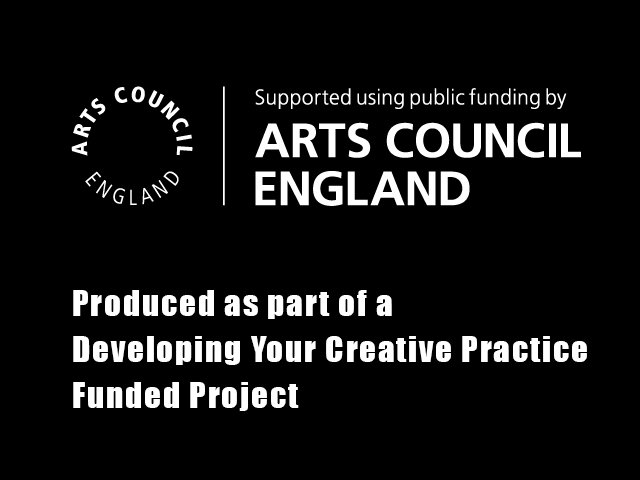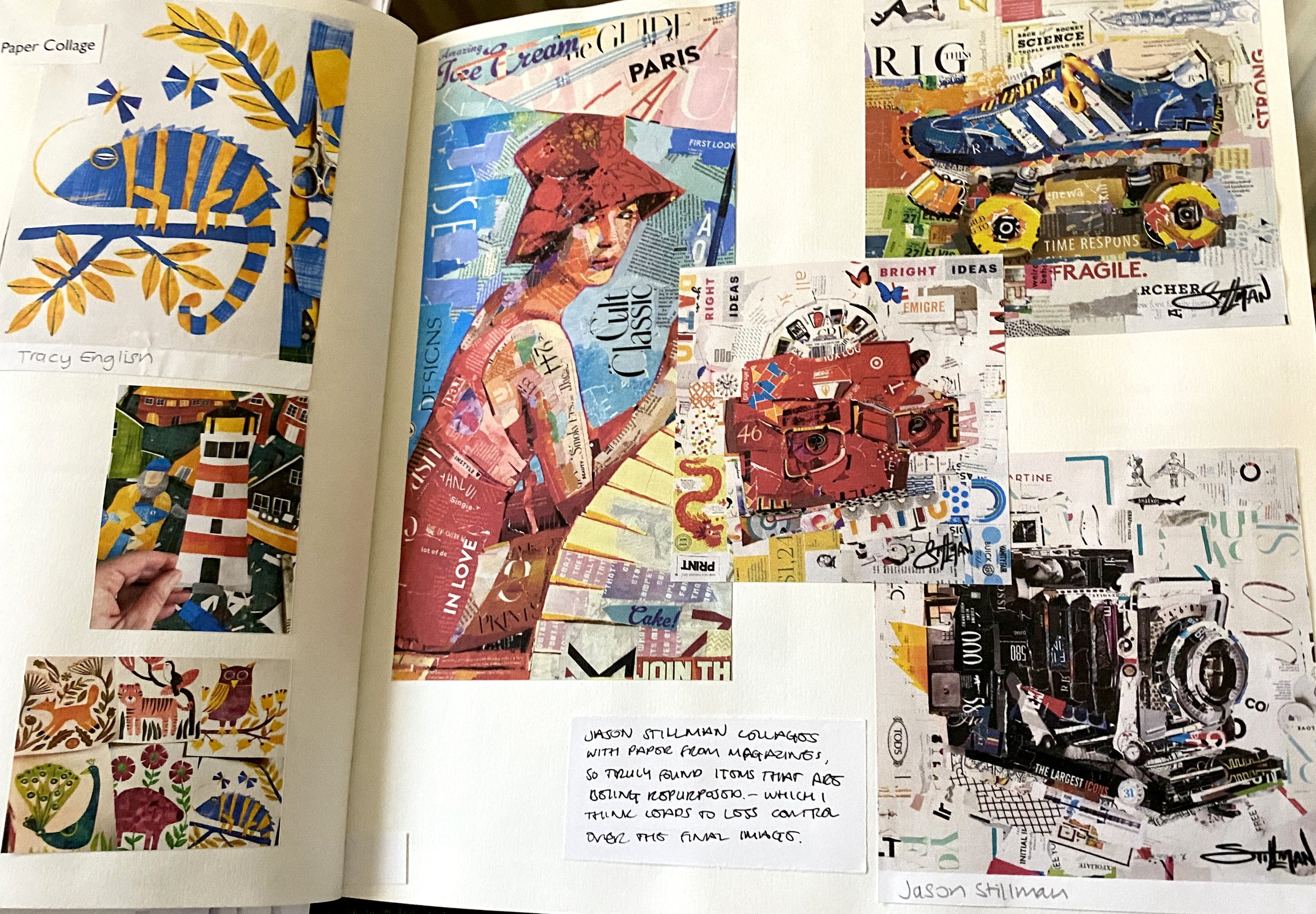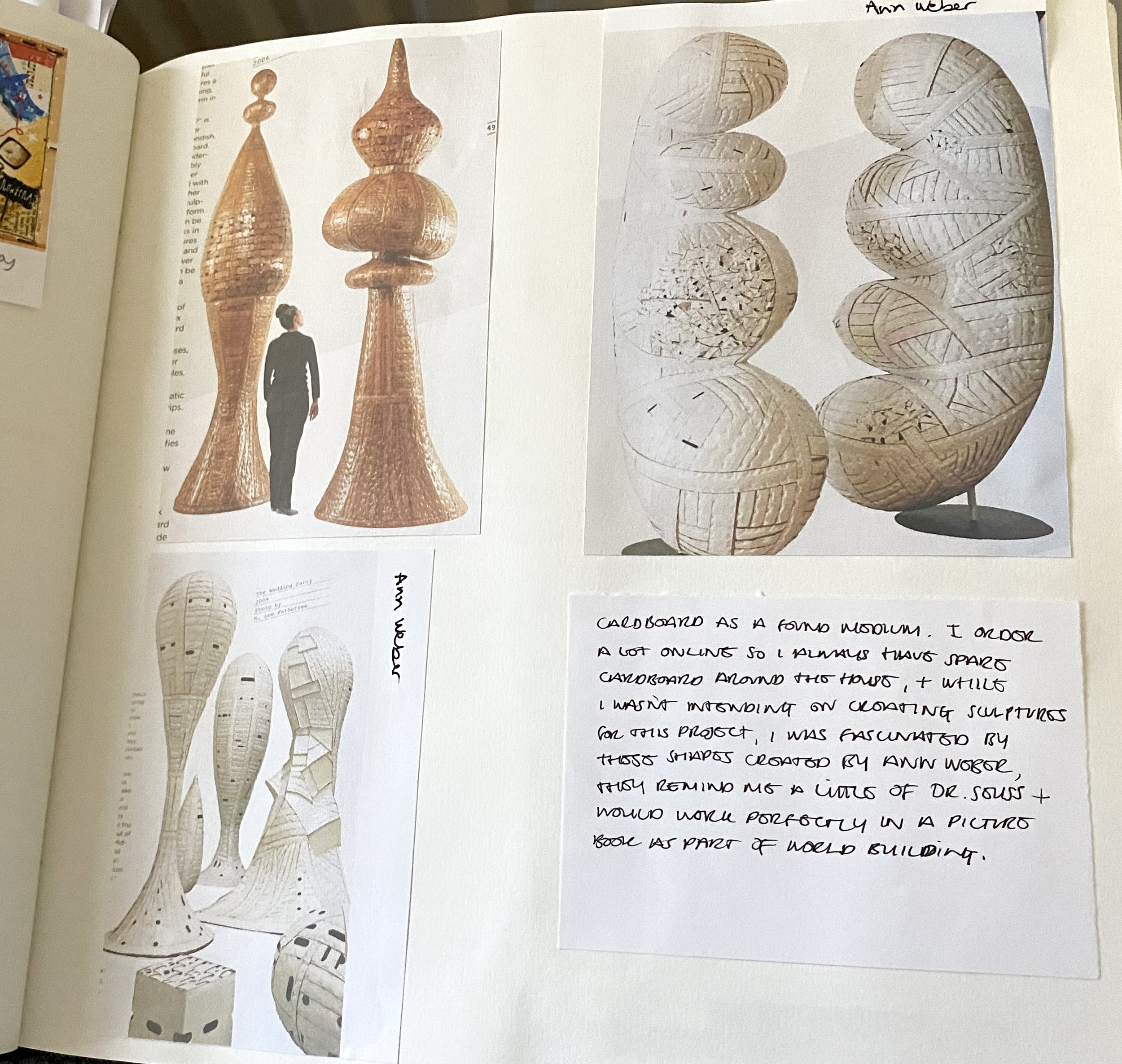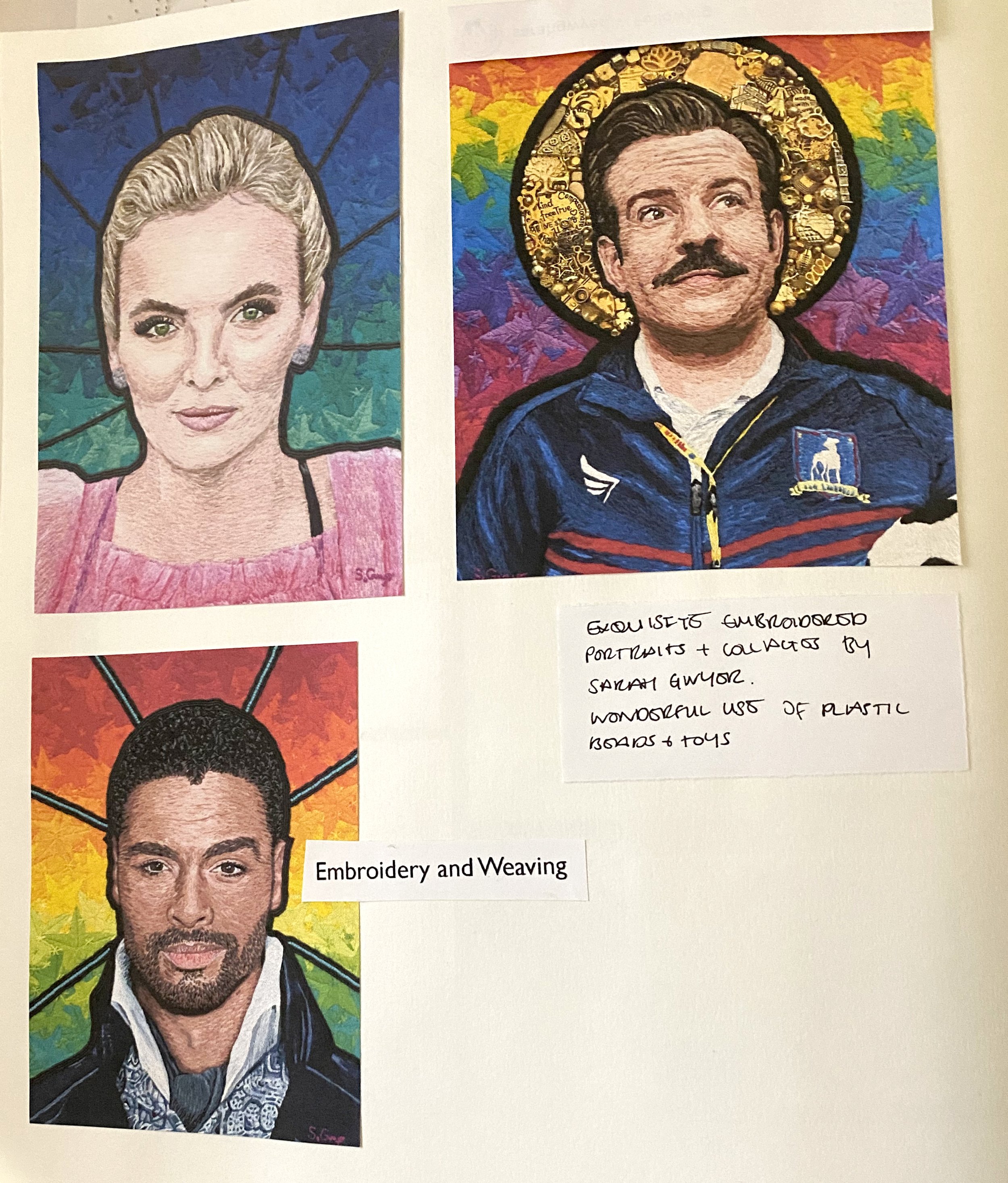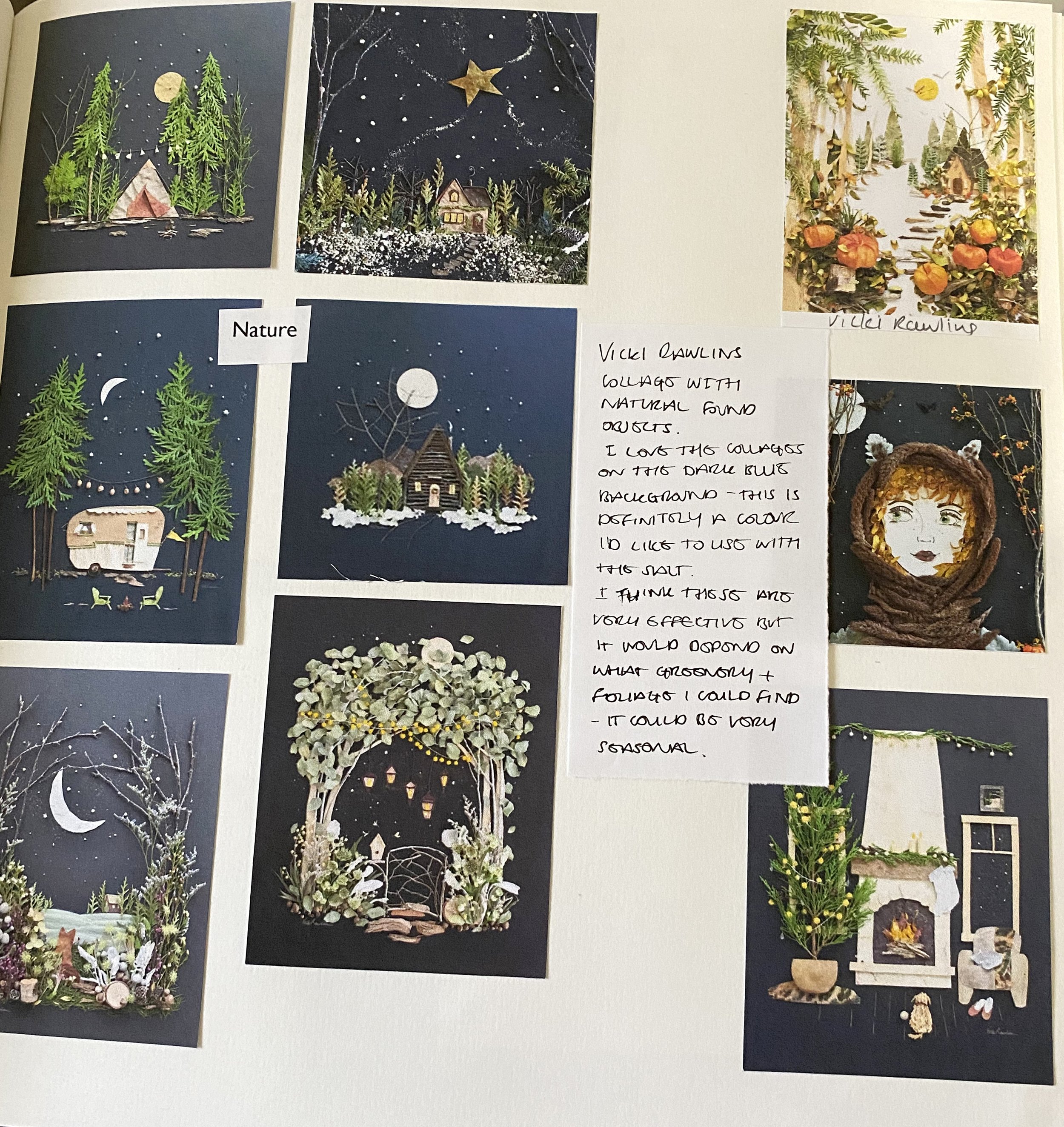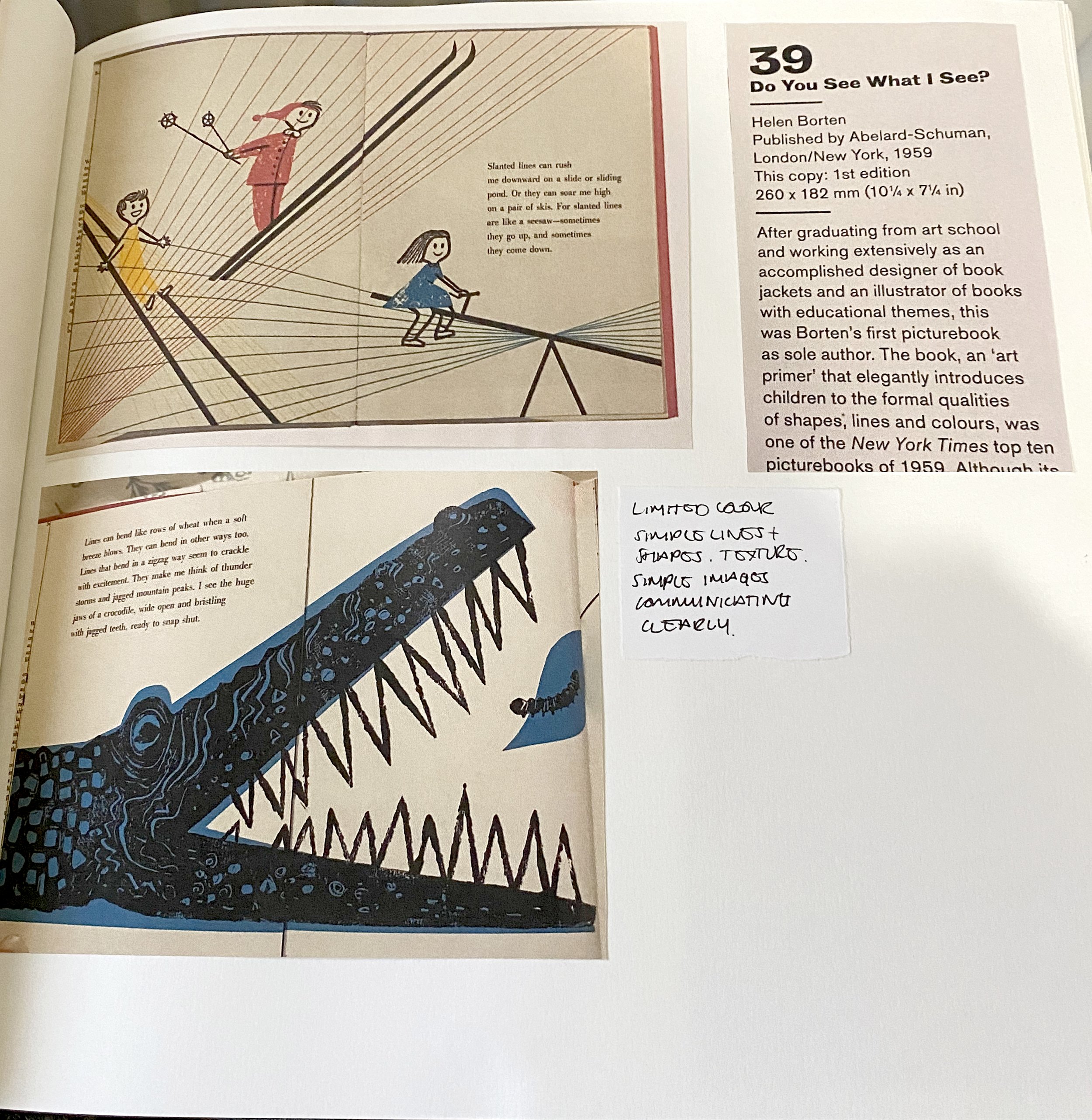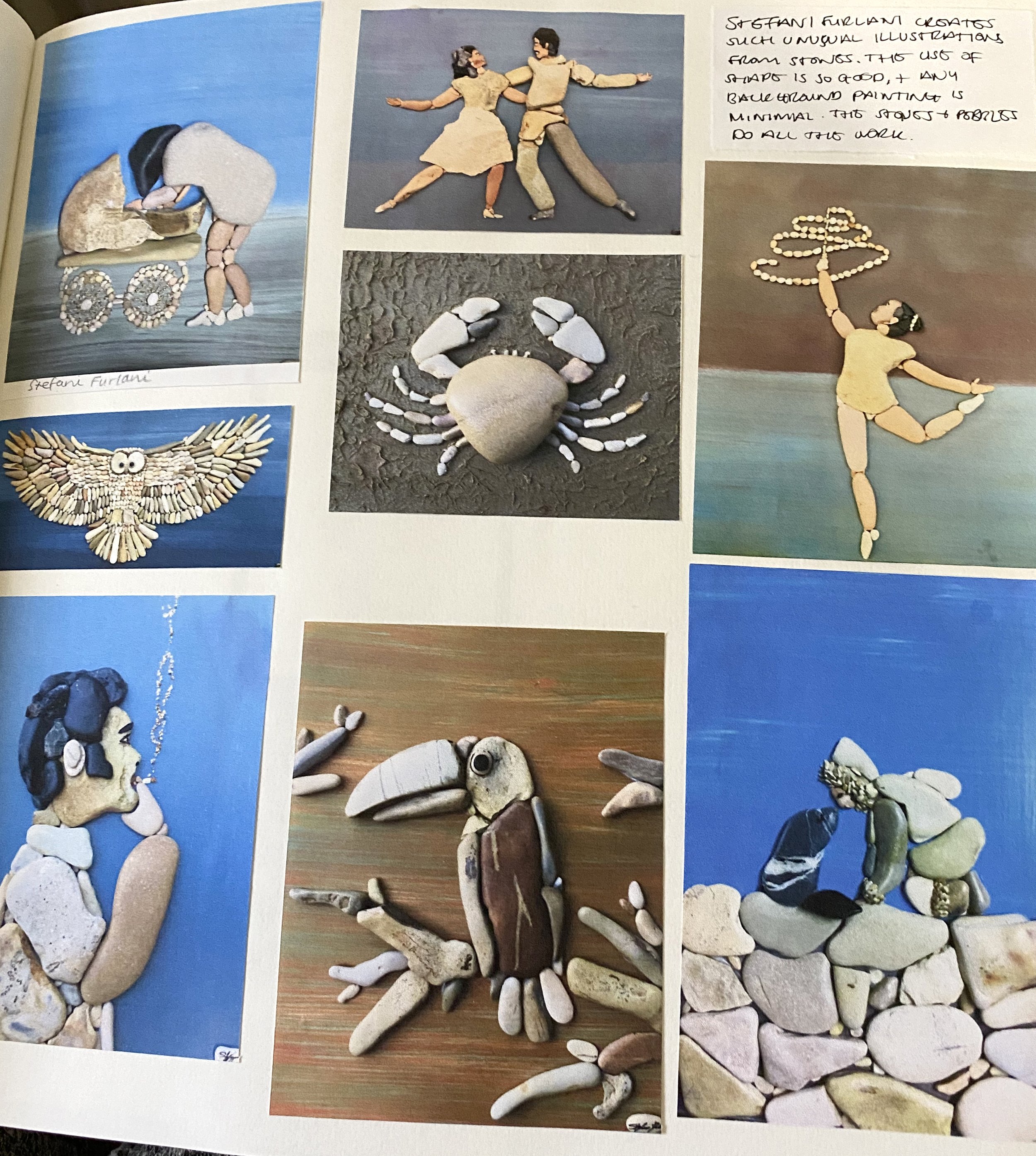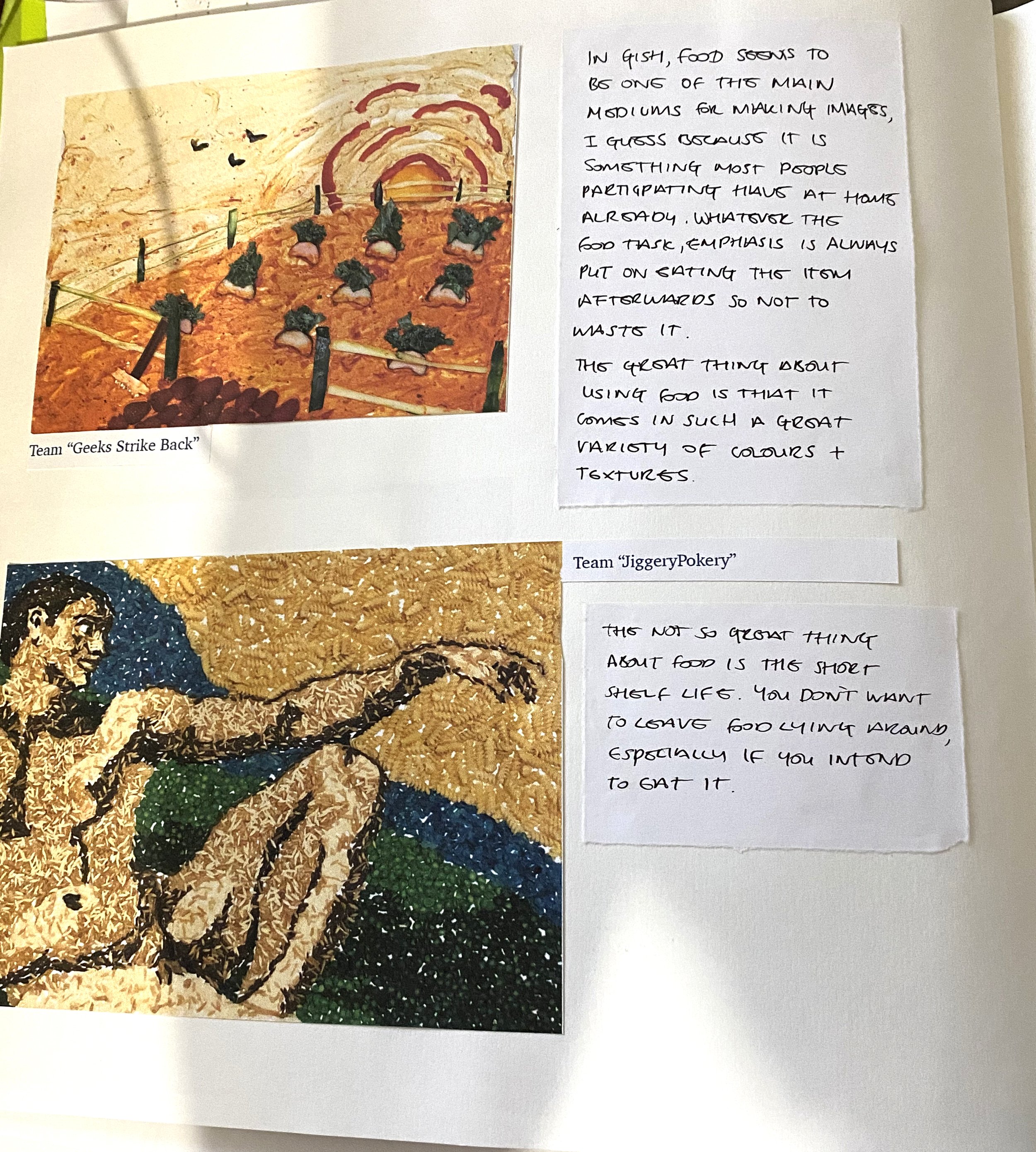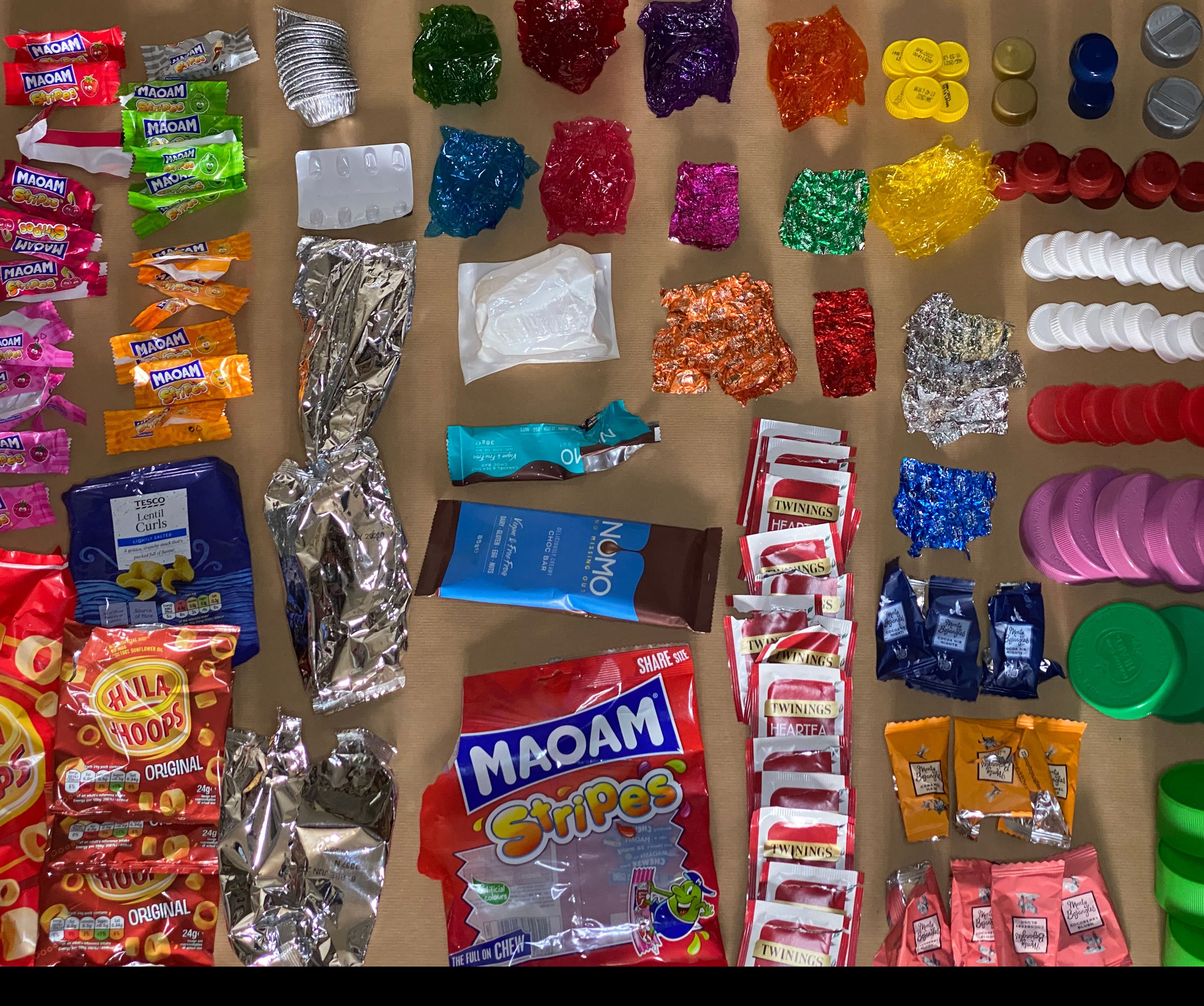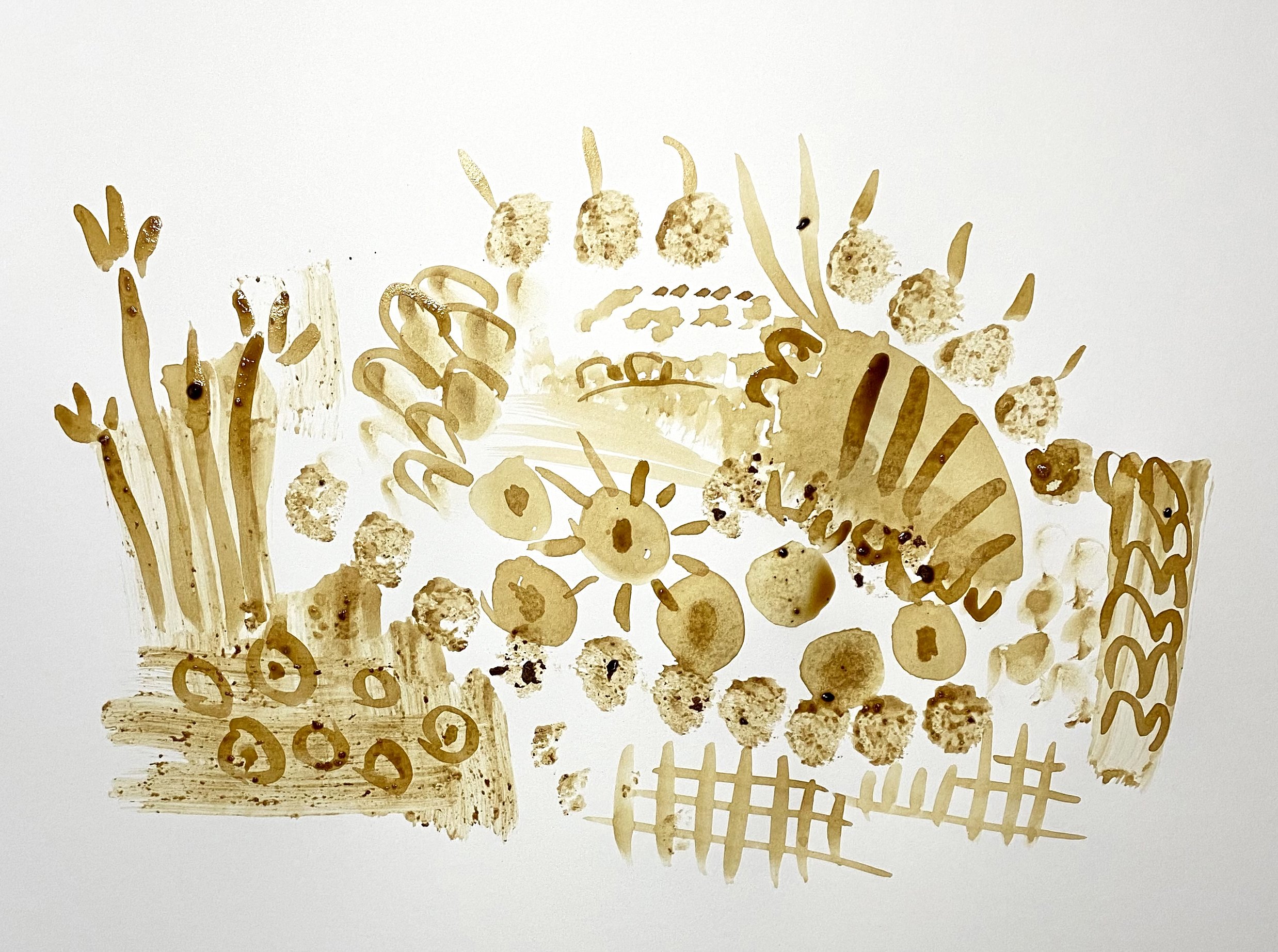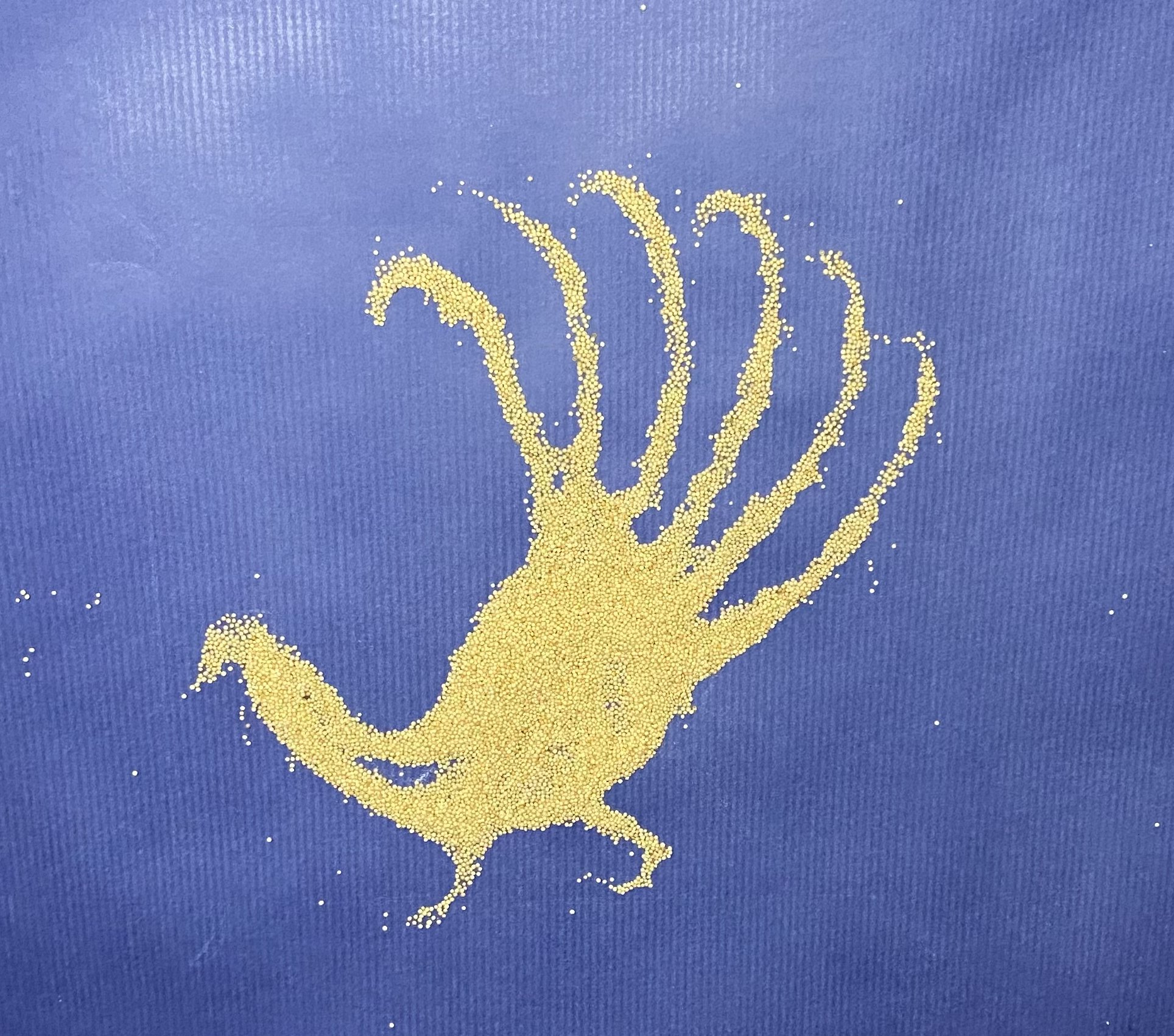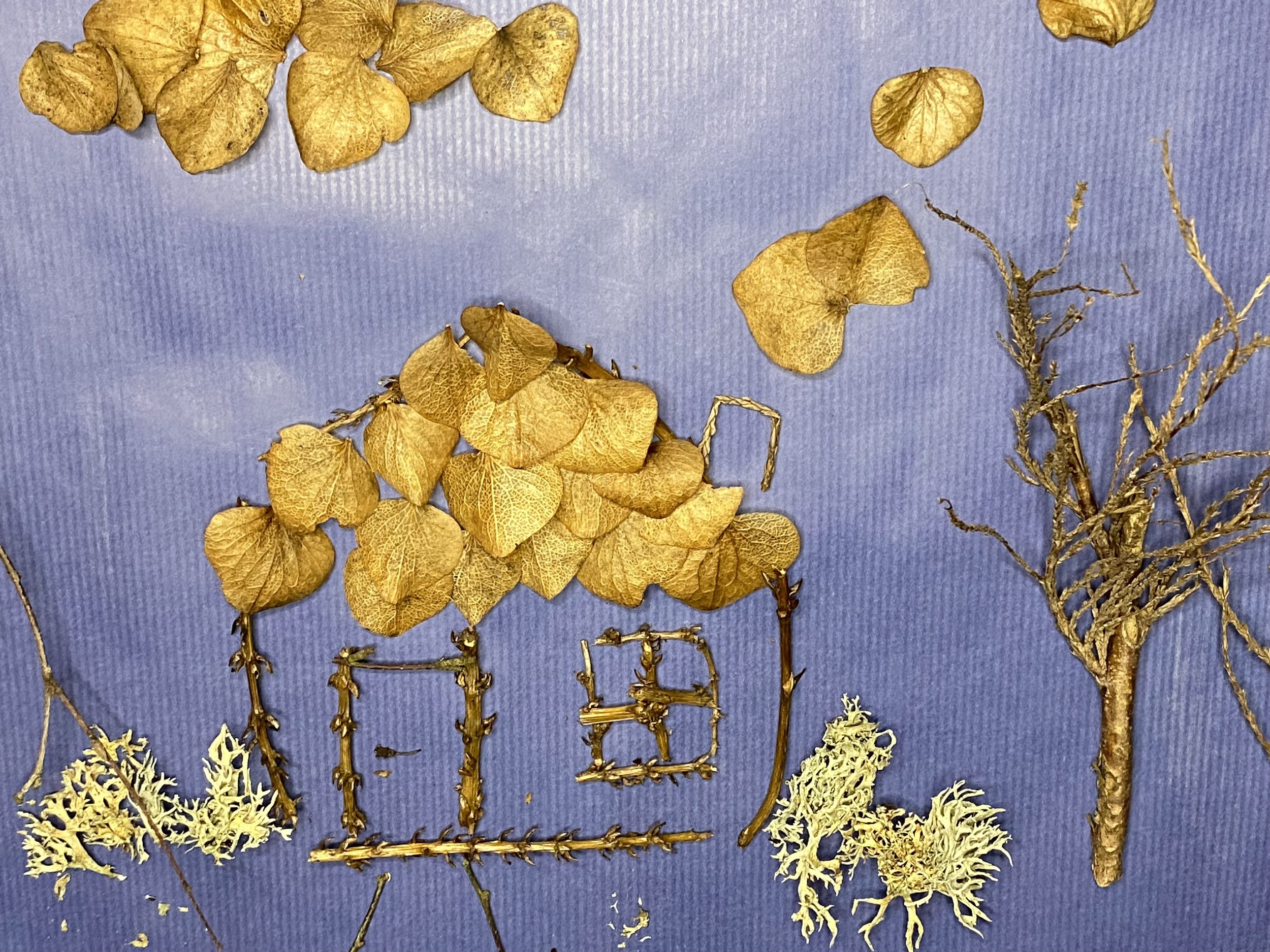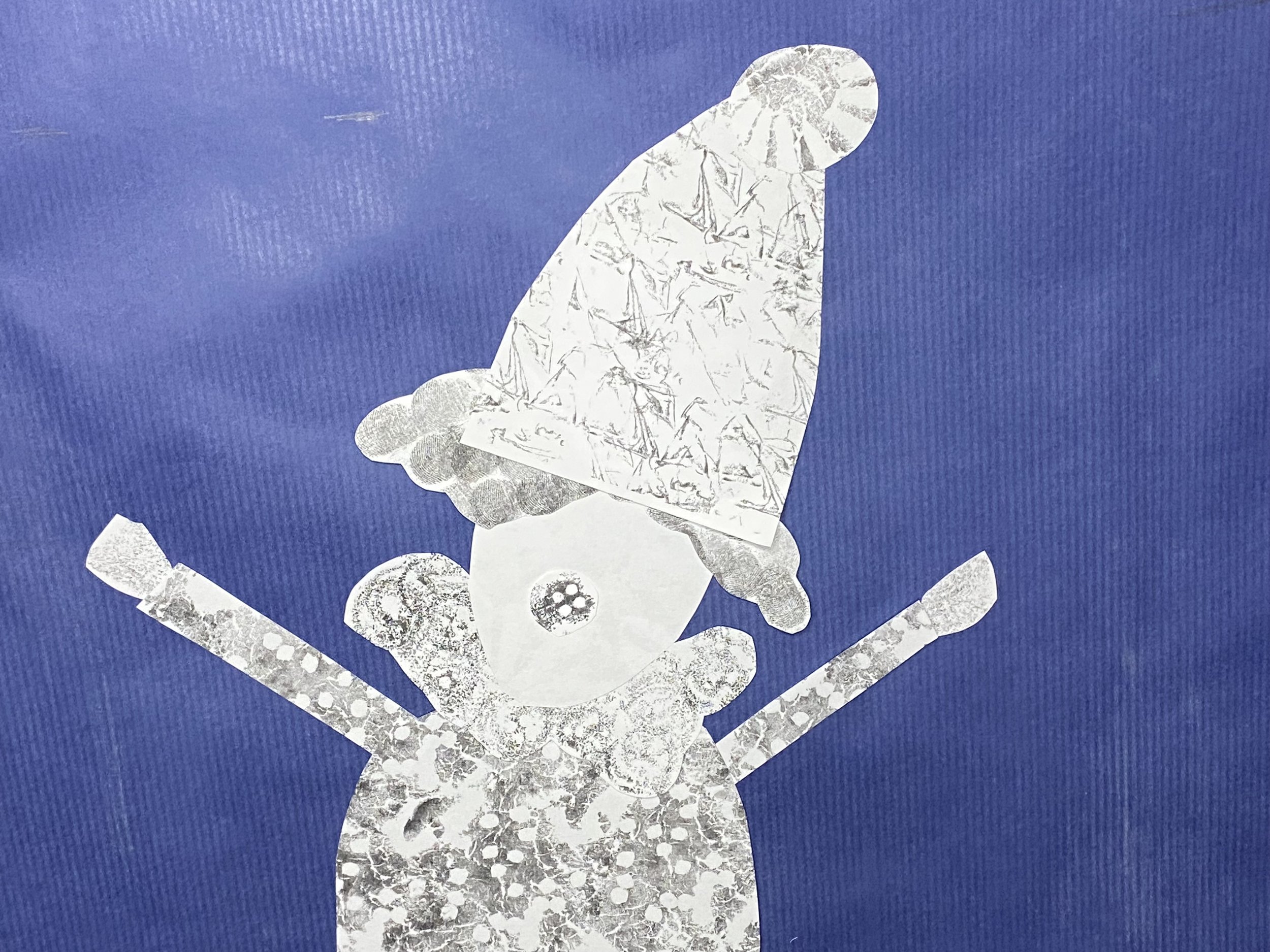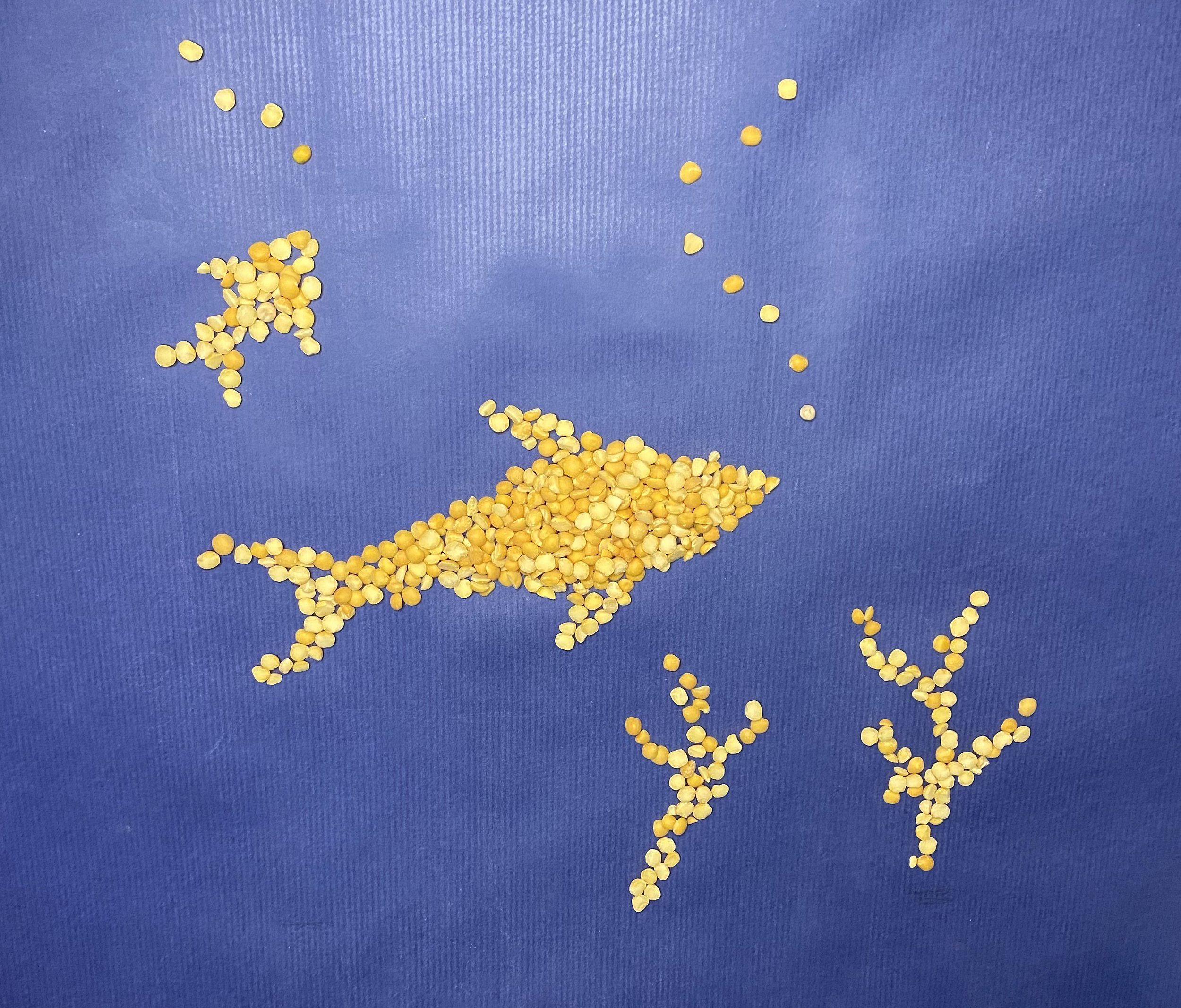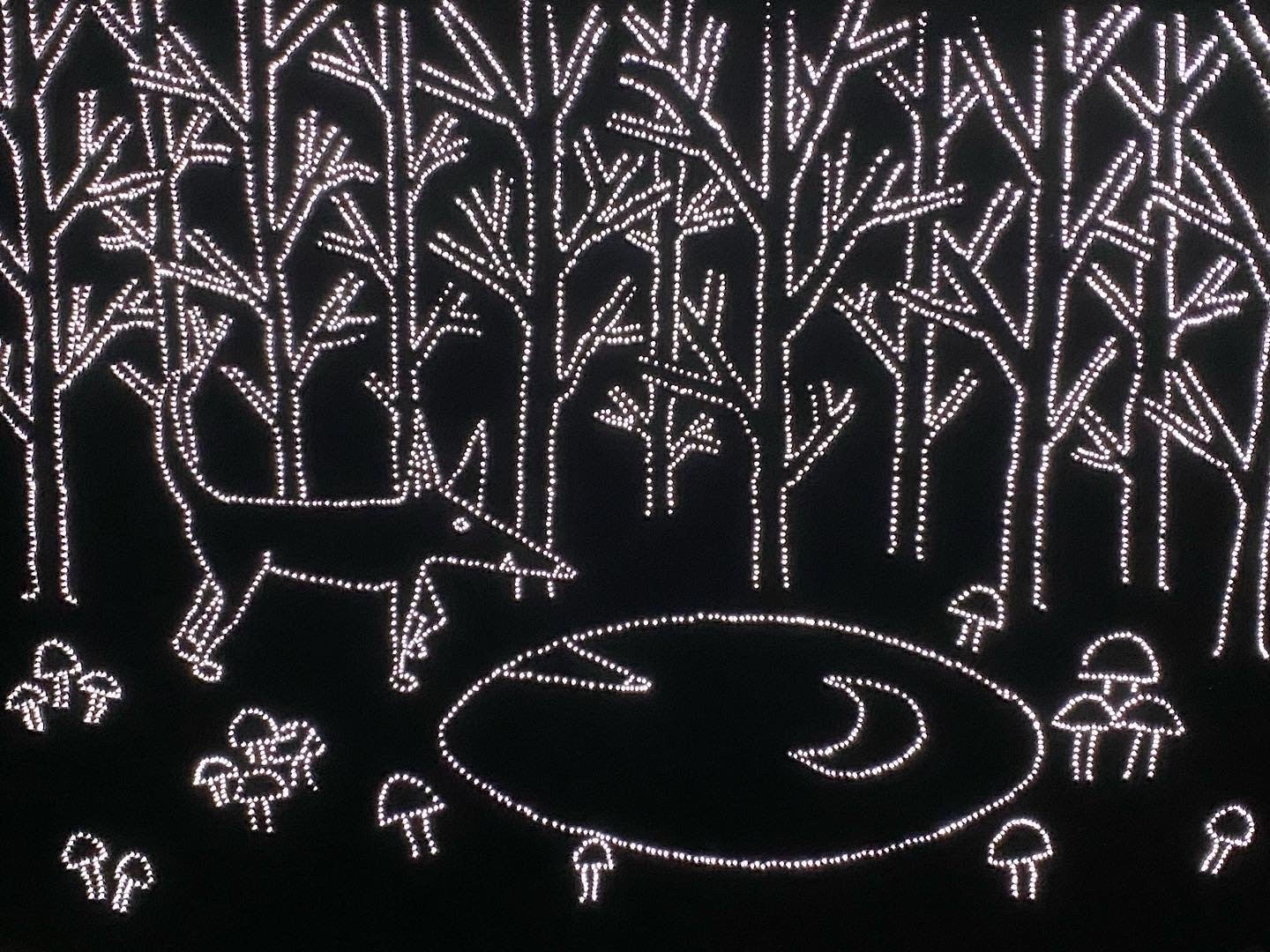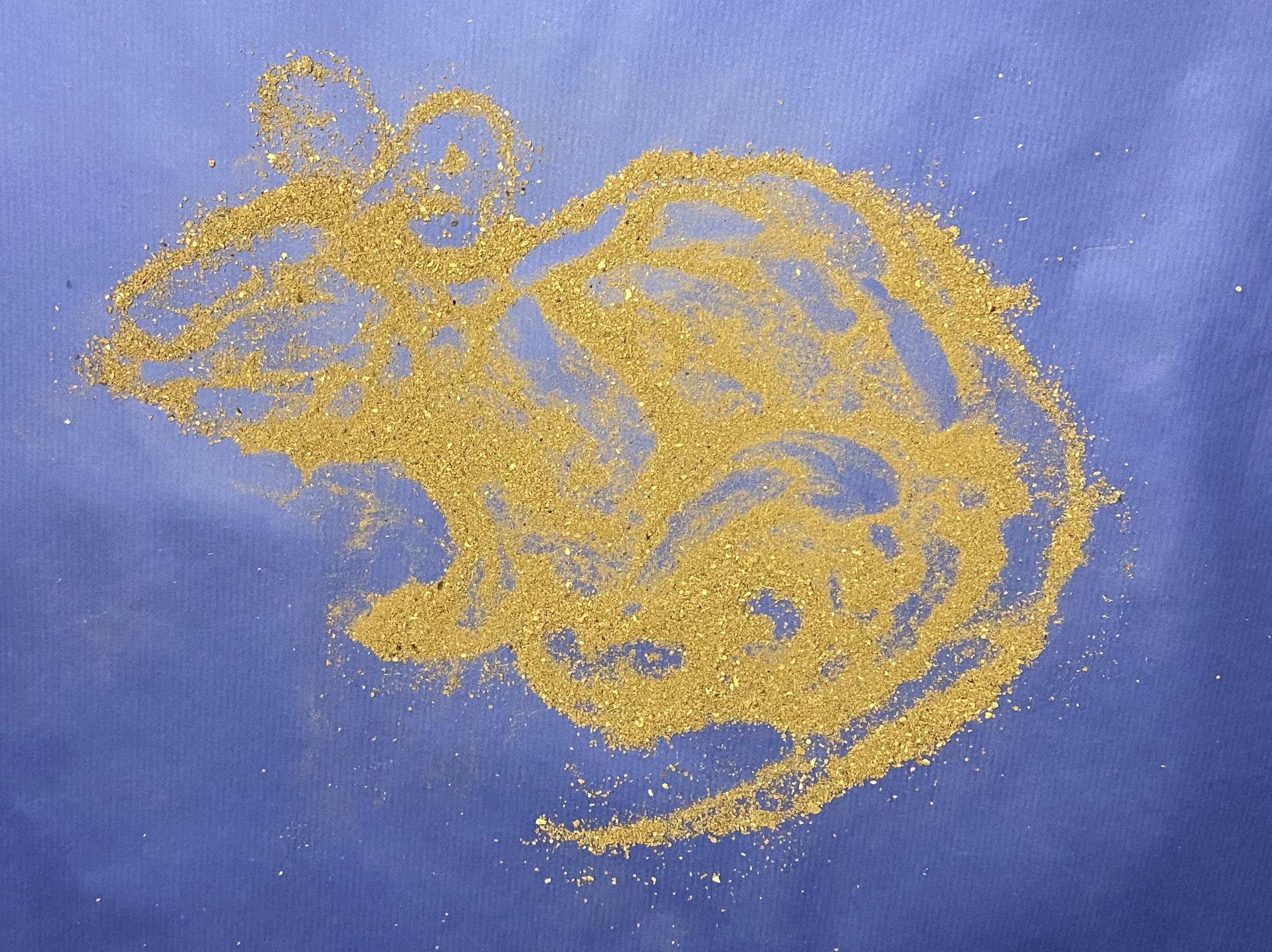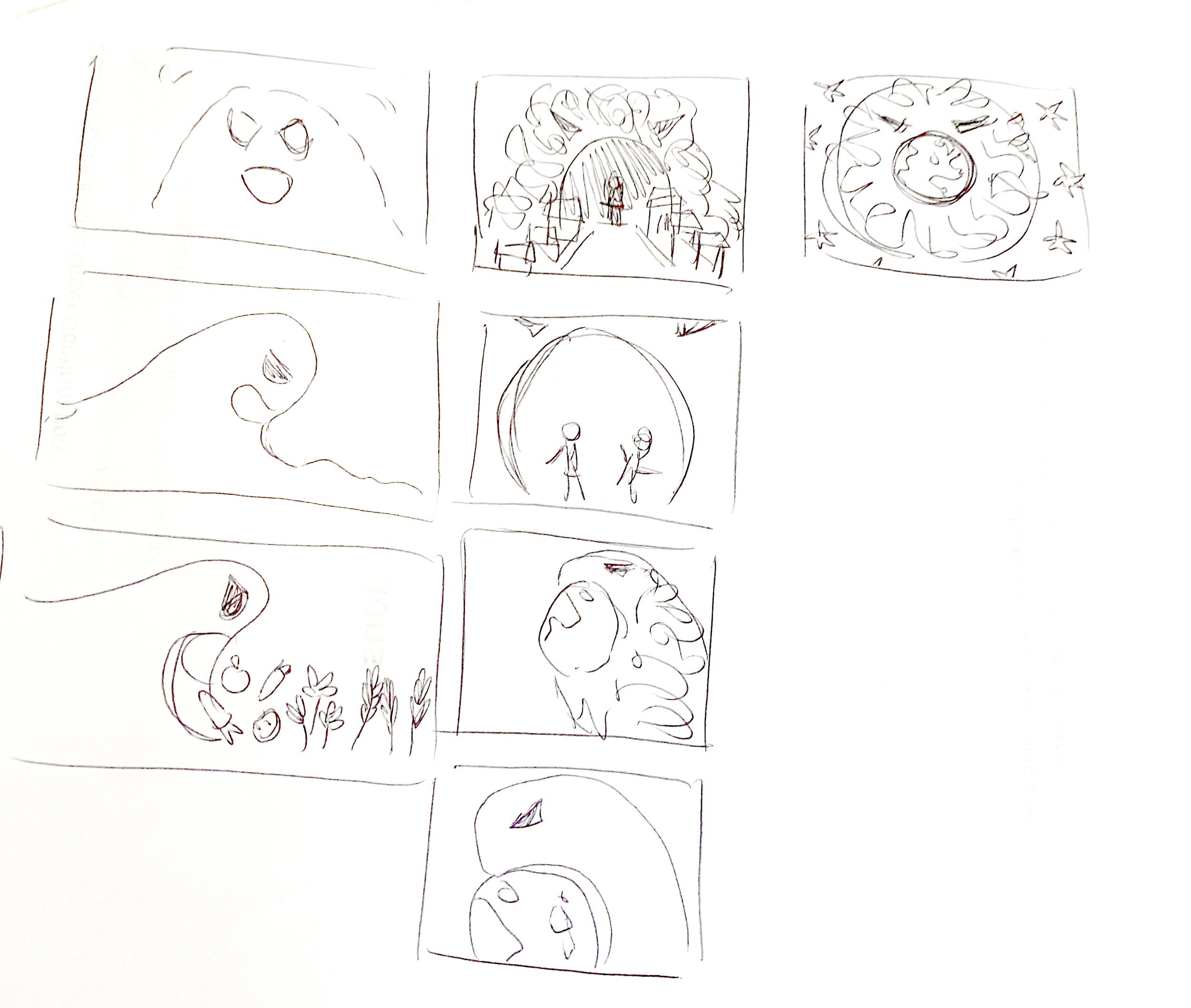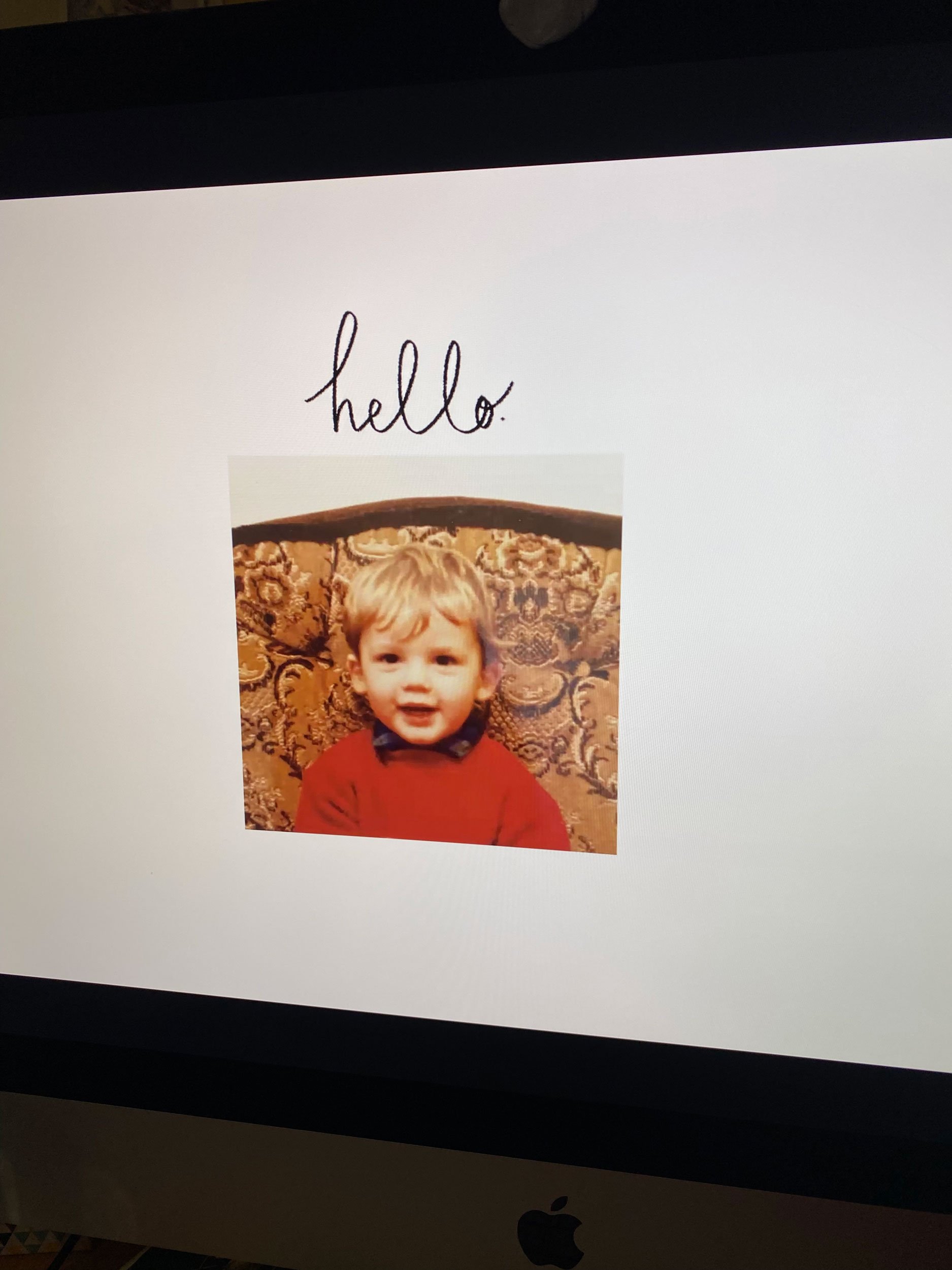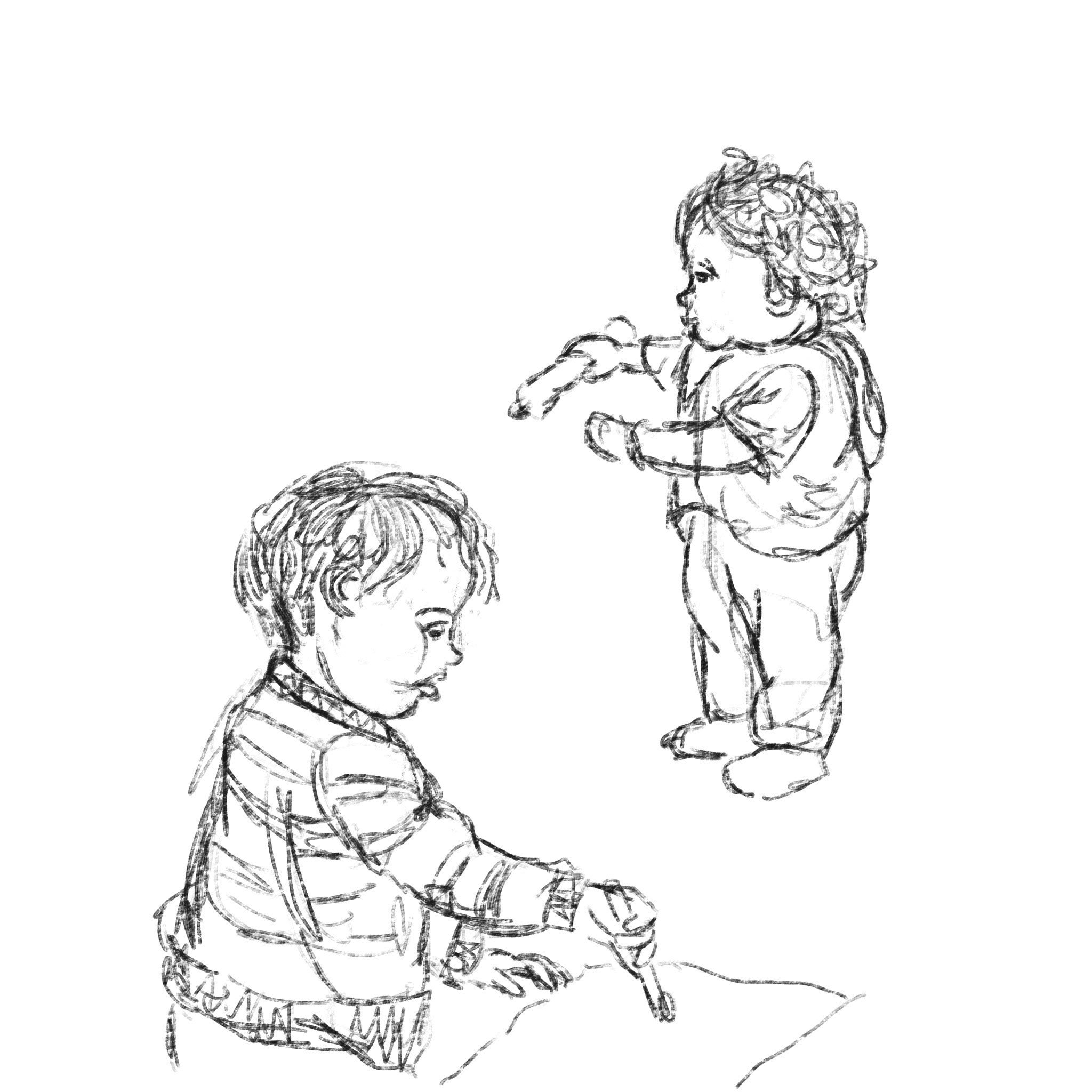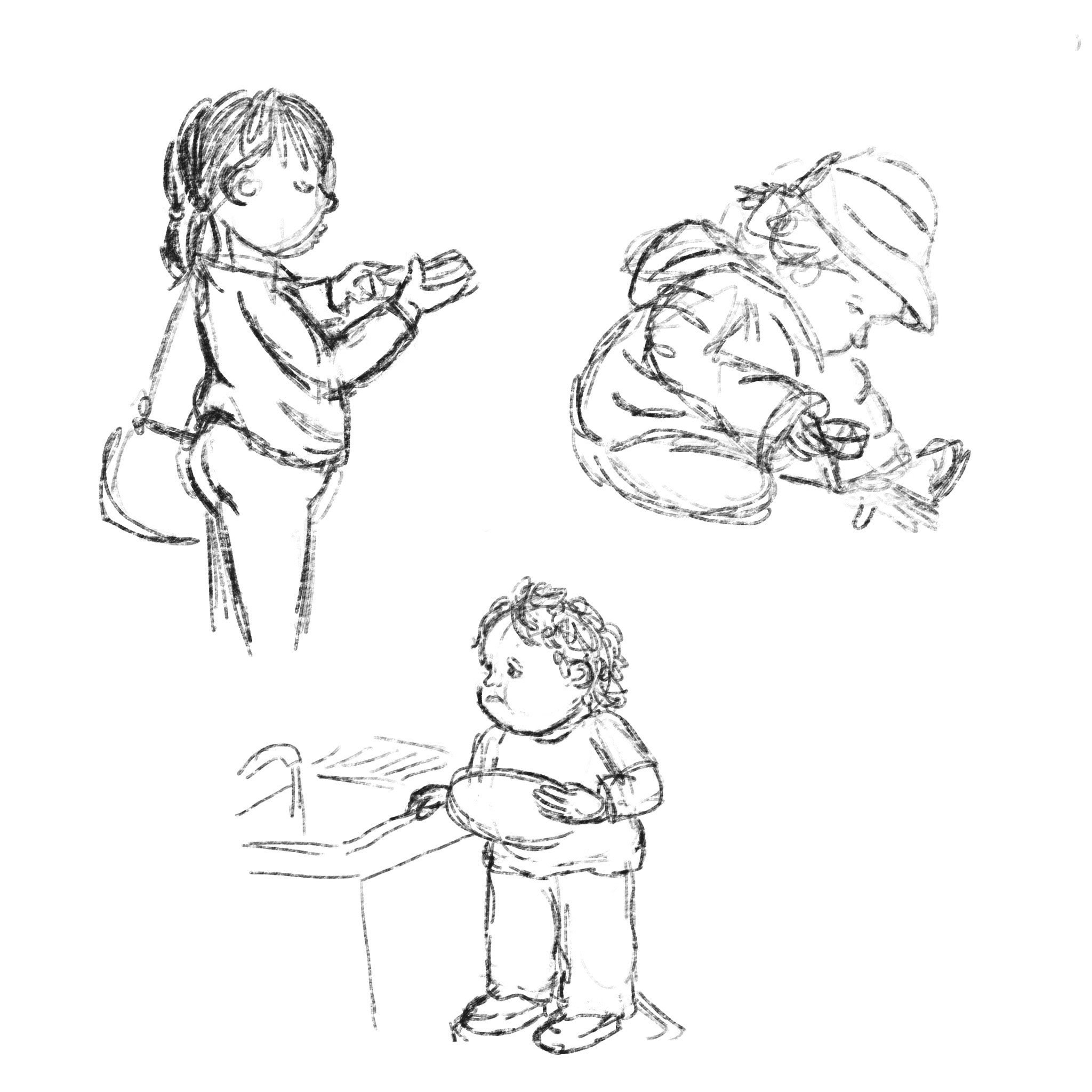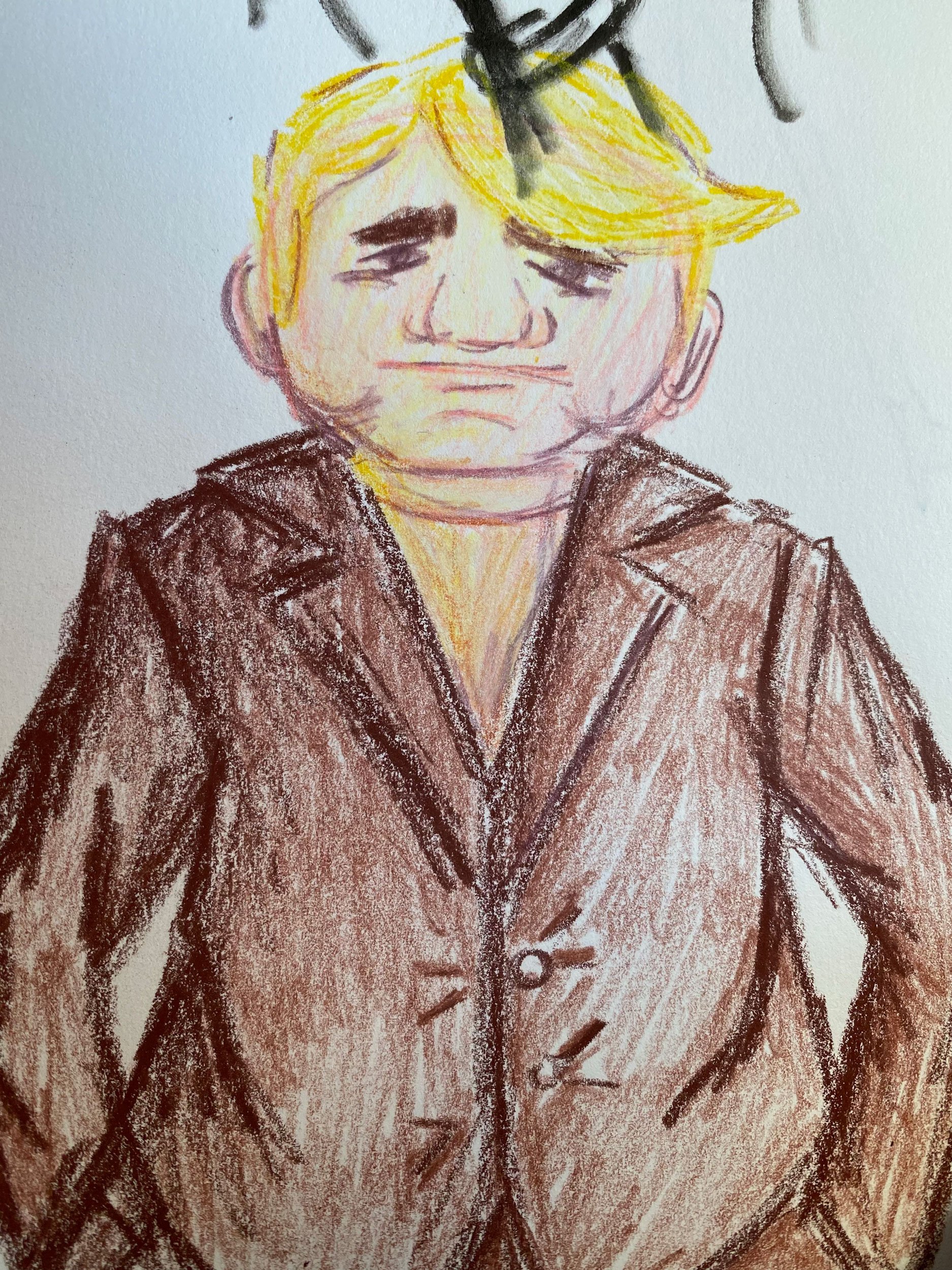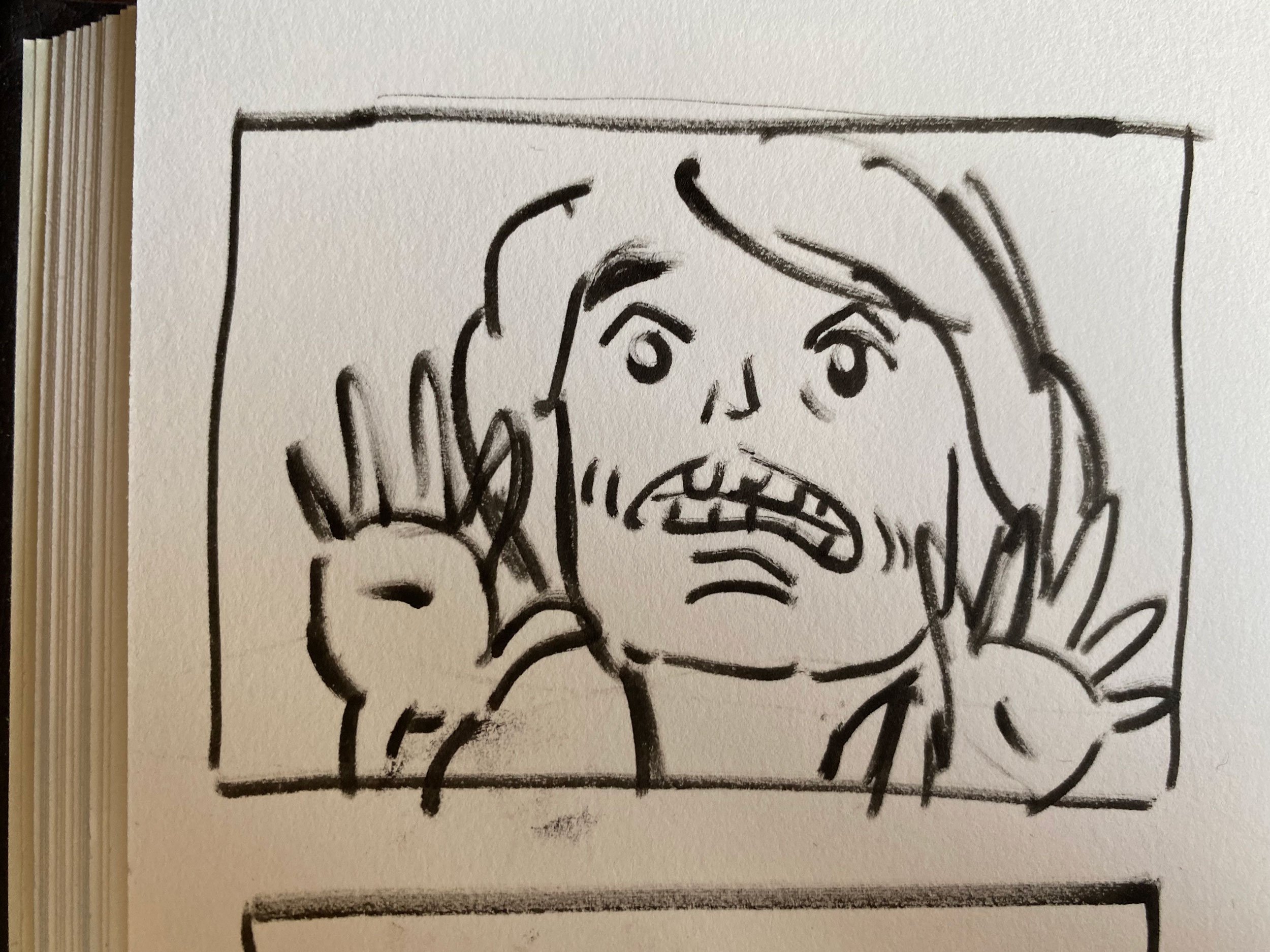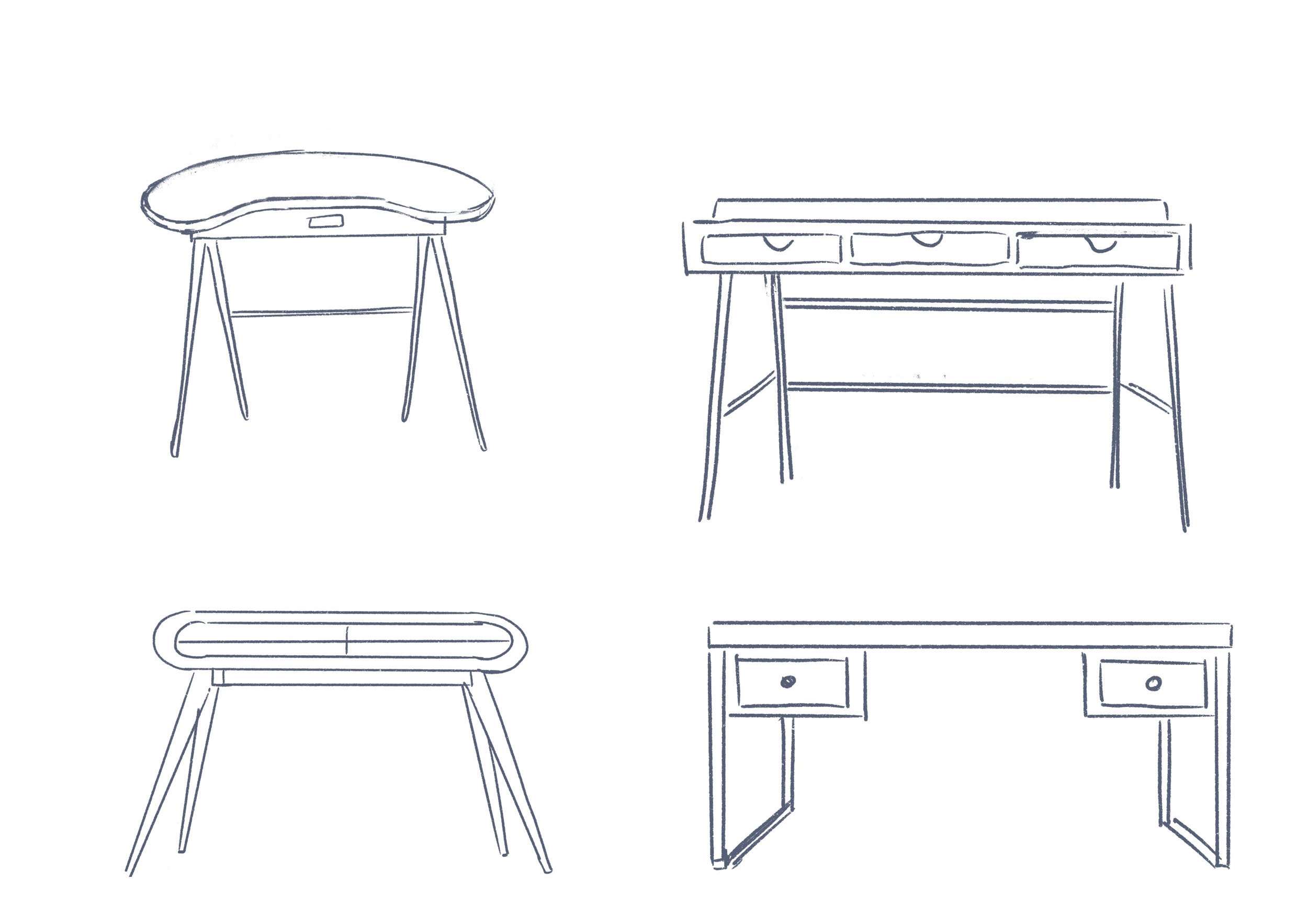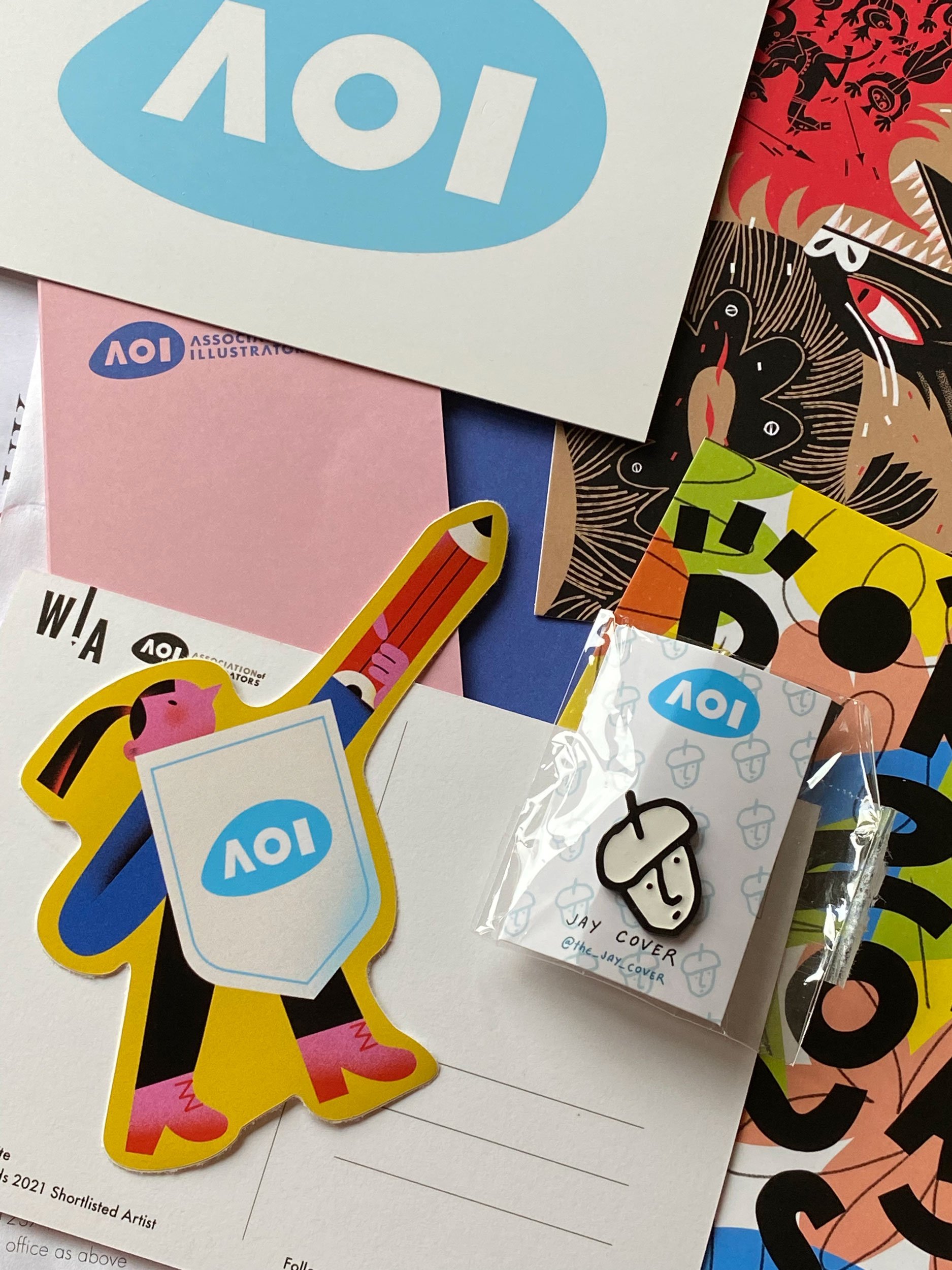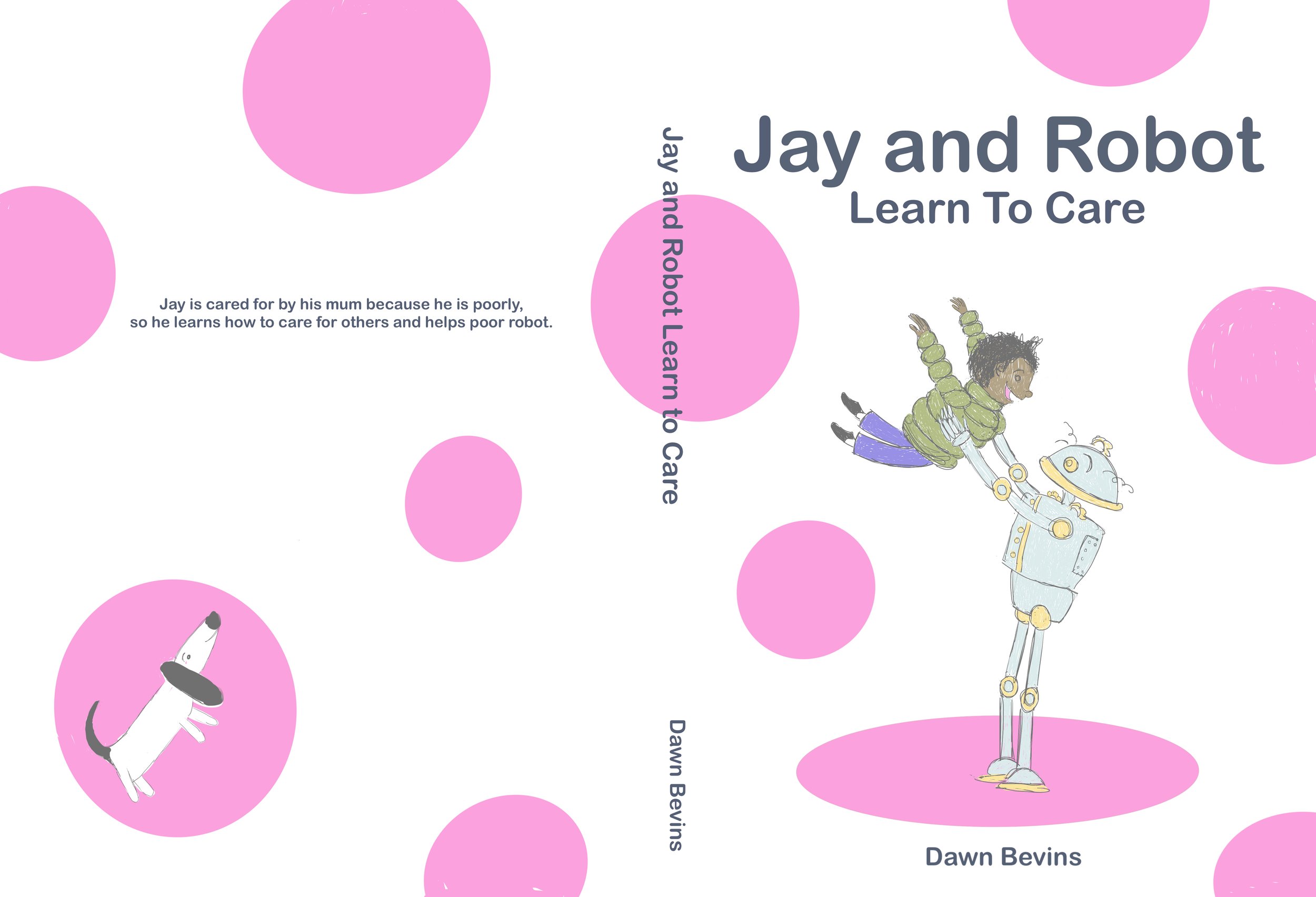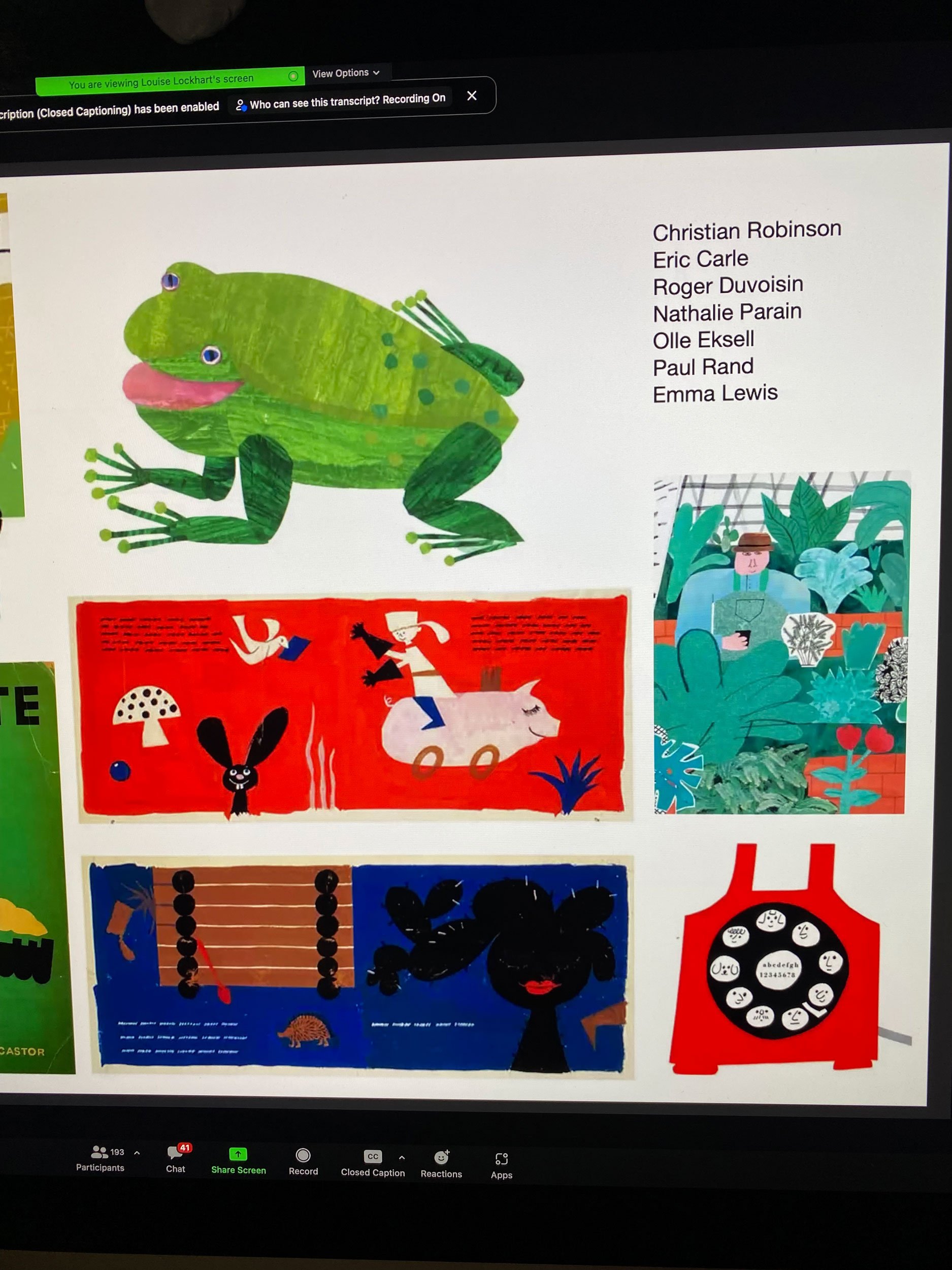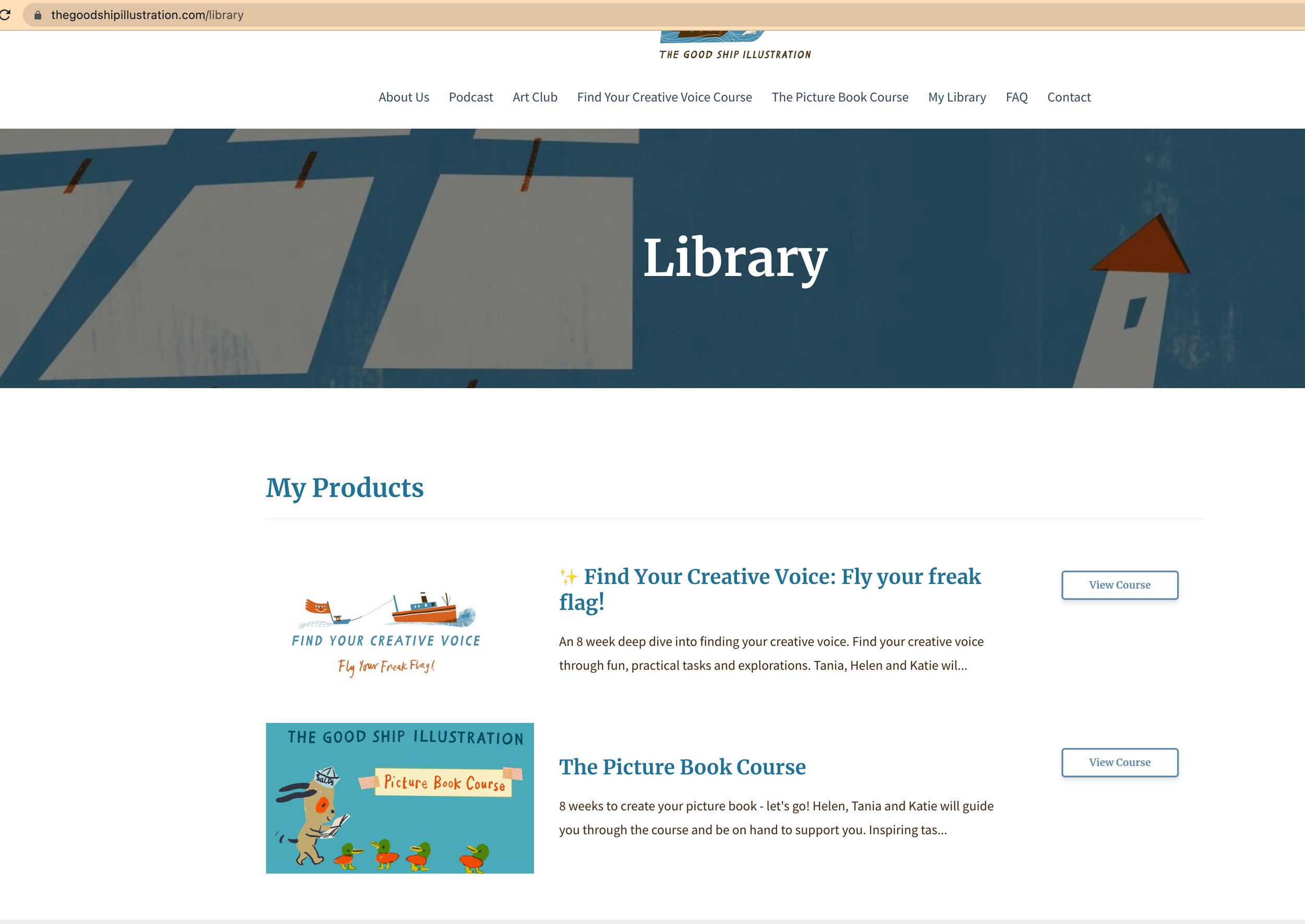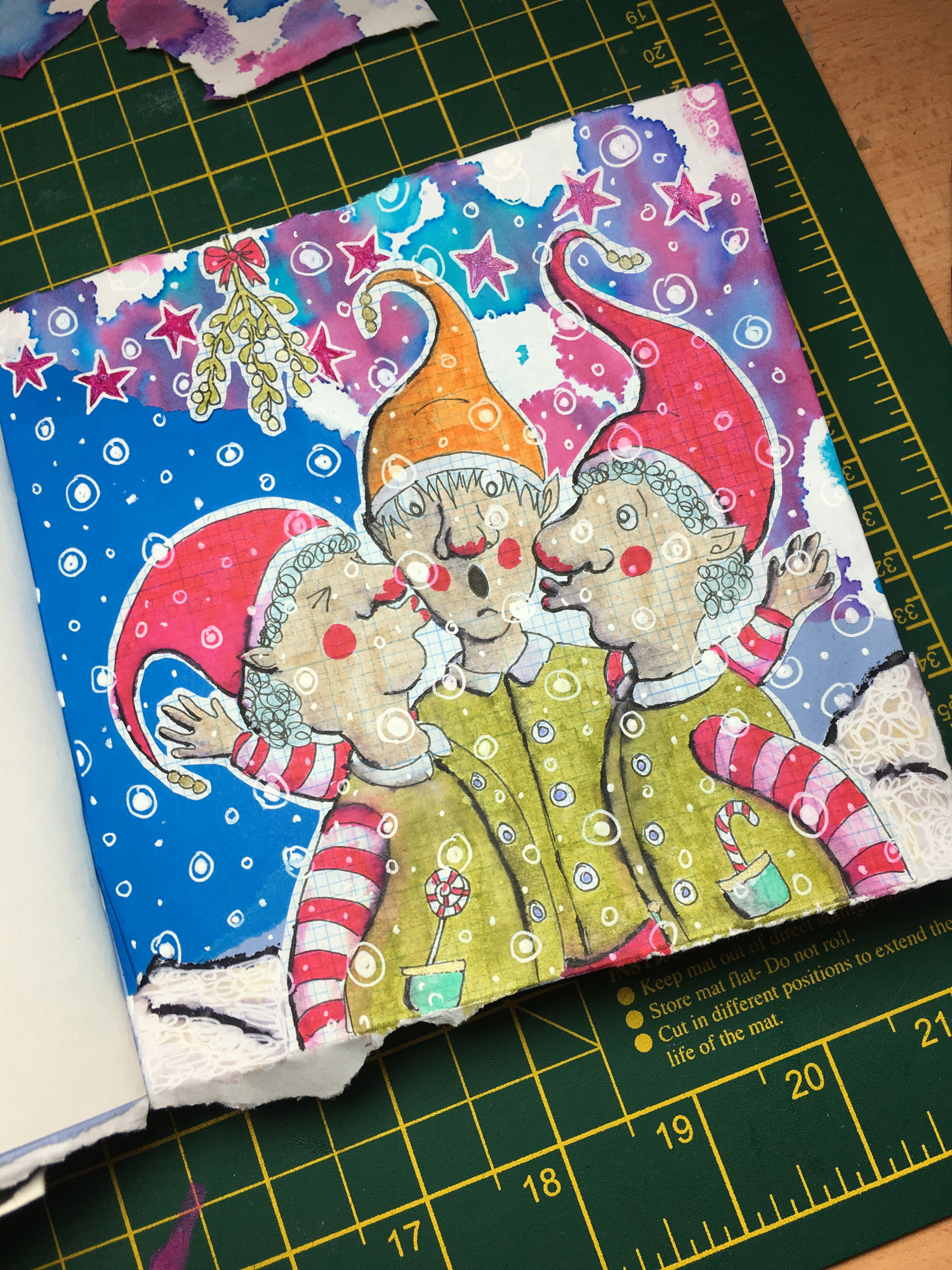Developing Your Creative Practice Funding 2021 - 2022
How It Happened
In October 2021 I was awarded funding for the Develop Your Creative Practice (DYCP) program run by Arts Council England. You would be forgiven if you’d never heard about this funding opportunity before, I hadn’t either until around June 2022, when I saw illustrator Sara Rhys mention it on Instagram.
It is not something I enjoy sharing publicly, but, at the same time, I was a month or so, into dealing with the breakdown of my marriage. I was an emotional mess, I felt worthless, I had no idea what I was going to do, I certainly didn’t know if I could continue down the creative route I was on, and I felt very despondent about my future.
However, part of me became curious. I think part of me wondered if being awarded funding was something I could actually achieve - the part of me, which was trying to reach out and grasp on to positive opportunities and experiences, and back myself. If I’m honest, I think there was also a tiny part of me that thought I could prove that I wasn’t worthy, if I failed to be awarded funding… well Arts Council England must have seen me coming a mile off, they helped me to pull my socks up and face the world.
Sara Rhys, had been awarded funding in the previous round, so I messaged her for a bit more insight, and she kindly sent me in the direction of Cai Burton. Cai is an artist, illustrator, creative producer, and creative mentor. He too had previously been awarded funding, and had started holding workshops to help others with their applications. I saw there was a workshop coming up, so booked myself a space on it – and it was so useful. Cai walked us briefly through the questions we would have to answer, and shared links to previous successful applications, and this guidance was so valuable. I had never applied for any kind of funding before, so when it came to filling out the application, I had no idea what sort of things I should be writing about, and it felt incredibly daunting. Discussing the questions and reading through previous examples helped to get me started and gave me a little bit of confidence.
Cai also mentioned that the current system used to upload your application, “Grantium” is frustrating, and can take longer than you anticipate. I have read that there is a plan to update or replace this system, but if you wanted to apply, do as Cai suggested, give yourself more time than you think you will need.
Cai also offered one-to-one sessions if you wanted him to look over your application, and considering the whole program was so new to me, this felt like a good idea, so I booked a session. Honestly if you, or someone you know is thinking about applying for this funding, I highly recommend Cai’s workshop and one-to-one sessions if they are available, as they were just the support kind of support I needed. It was just little things, like, pointing out that something I had written in my answer for question 1, might actually be better suited in my answer for question 2.
Between the workshop and the one-to-one, I think I had about a week and a half to work on my answers. Answering three questions doesn’t sound particularly hard, or, like it would take a long time, but there is a strict character limit for each answer, and the most time consuming part is making sure you are able to say everything you would like to, as detailed as you can, but as succinctly as possible. If you are applying, do leave yourself lots of time to work on this, every single word counts.
I can’t remember how the process works exactly, but you have to leave yourself plenty of time to apply for a Grantium login. I think I had to request one, and then wait a couple of days. I think once I was able to log in, I also had to fill in another form and wait a couple of days before I could complete the application – what I’m trying to say here, again, is, give yourself plenty of time and don’t leave it until the last minute. You are warned parts of the process could take days once you are logged in, so make sure you read all the information. It is my understanding that Arts Council England are a small, hardworking team – my experience is that they always get back to you, and sort out these admin bits quicker than they say they will, BUT, they are a small team, if they get busy, they just might not be able to get back to you quickly as you need, so send queries and apply in good time.
So, even though the deadline was creeping closer, and I wasn’t entirely confident with what I was doing, my gut instinct told me to focus. I managed to plan my project idea, based on my current work, plus my passions and curiosity, and I submitted my application.
Then I forgot about it.
I honestly didn’t think I stood a chance. Until I had an email, telling me to check my Grantium account because a decision had been made. And there it was, a big long email with lots of information, but importantly, it told me I had been successful. I struggle to put that moment into words, I read it at least four times, convinced that I was as reading it wrong, then I sat In front of my computer screen in disbelief. I cried and then I laughed, and then I realised I would have to get myself organised.
My Project: Bringing Found Objects & Mediums into Children's Illustration & Storytelling
My current work has involved developing a portfolio for children’s picture book illustration, and with my DYCP project I wanted to find out if I could incorporate found objects into my work, and experiment with how that could be presented, whether traditionally printed, or if it would be more suited to some kind of film or motion. The reason I wanted to experiment with found objects, was partly from curiosity – having played Gish for several years, and having faced the challenge of using unusual objects, which I found very rewarding, and partly because I am interested in encouraging others to make art, even if they have no training or art materials.
I began by researching art and illustration that has already been created, as well as looking at past Gish challenges (which are often influenced by real life artists). i discovered that there is very little children’s illustration created using anything unusual, but there are plenty of artists creating one-off pieces with anything form ballpoint pens to coffee, to stones, to paperclips.
I think the key thing I did take away from this research is that mostly only single images are created from unusual materials, not sequences of images. Nevertheless, I was undeterred and created a list of materials I wanted to try creating pictures with, before collecting them, and trying to work with them.
This stage did bring me promptly back down to earth. For example, I had really been looking forward to working with the natural plants and flowers, as I thought the images by Vicki Rawlins were so beautiful and charming, but one of the challenges to this stage of my project, was that it fell in January, so it was slim pickings on what was available to use. Still, I collected what I could and had a big bag of twigs and dried hydrangea heads. It wasn’t until I started trying to make pictures with them and several other materials that I realised how difficult they were to use. To create a single image required patience, but to try and move all the different elements carefully enough in order to produce a sequence of images, or any kind of stop-motion inspired animation, seemed to be beyond my skillset, those organic shapes do not go where you want them to go, and it just ended up a bit of a muddled mess. You also had to plan ahead when using things like hydrangea heads, if I were to pull one apart, or tear up those petals, it is a destructive process, and if you only have limited supply, you can’t go back, once something has been destroyed.
If I’m honest, many of the materials I wanted to work with turned out to be a bit of a disappointment because they were impractical to work with; it is hard to film everything you need, when the materials seemed to have a mind of their own. I had even used pepper before, and it had been fine then, but this time I must have been a little heavy handed, as it went right up my nose. There was a lot of sneezing and tears streaming down my face, a silly mistake of my part, but it did put me off.
I also had to consider my working environment. I had intentionally tried to keep things simple, because when it comes to filming, I am an absolute beginner, and I didn’t want to bite off more then I could chew. So, I had requested budget for a ring light, which I used with my phone and my dining room table. It served my learning needs, but I also learned quickly, that not having a designated space, with a designated camera that can stay in place and multiple lights, was very limiting, in terms of the quality of the work I was wanting to create. I think to film anything you ideally need stability rather than a temporary set-up that has to keep moving, but that is what I had, and I was determined to take the opportunity to learn as much as I could.
I also anticipated that filming would take a long time, but it took even longer, and I found to try and keep up with my activity plan, I couldn’t quite experiment for as long as I would have liked with each material. I think this kind of experimentation is so vast, it could be something that continues to be ongoing.
The other thing I noticed about most of my materials, is that you are very restricted by colour. A lot of the materials resulted in one or two colour images, so you had to rely on contrast, and some materials were more successful than others. The non-recyclable packaging was one exception, there were plenty of colours - but colourful cellophane? Sweet wrappers stick to everything other than your paper, so are incredibly hard to work with, especially in small pieces.
The lack of colour, however, did make me focus more on line and shape, which I found really interesting.
I did enjoy the final image of the tiger head, even though it was using pepper. It was created from two different peppers, but once you start using two fine materials together, such as a powder, or any kind of grain or pulse, you are presented with another hurdle, because you can’t separate and use them again because they get mixed together.
The one material that didn’t let me down was the salt! It has such great contrast on blue or black paper, it is easy to move around and shape, but heavy enough not so go off and do its own thing.
A strange thing that happened as I tried to move away from still 2D images and transition into film and motion, was I kept thinking of storytelling in the form of poetry, and continuous movement. I watch film and TV all the time, so cutting to different scenes and editing together seems obvious, but I felt a need for everything to move and change within a frame – to have a continuous flow. Maybe, it was because the materials were tricky to manipulate, I wanted to move them slowly and carefully, making sure I filmed everything I needed before it was too late, because you couldn’t go back and recreate the image at a later date, in exactly the same way.
I wrote several poems and a couple of little stories about a handful of the materials, as I wanted the the stories to relate to what they were being created from, and then I created some rough storyboards. I chose to continue with salt, influenced by the TV show Supernatural, where characters are often seen using salt to protect from or trap ghosts, I wrote, recorded and visualised one of my poems. I thought this poem was quite fun, and I love the contrast of the black and the white. The salt, although easy to work with, does leave trails, and I thought this also suited the ghost theme.
When the annual Gish scavenger hunt rolled around again, and I saw there was an animated poem task, it seemed like an ideal opportunity to continue trying to practice my filming and editing skills. Time was limited, so it was created with paper rather than something more unusual, but I still thought the result was quite charming.
As the project progressed, I think I became more interested in filming the process of my learning than I had anticipated, it seemed more important than the final product. I think when we create, we are usually so focused on the end goal, that we fail to notice our process, and just how much work we are doing, and how much we are learning. I have an endless amount of clips of my hands moving material around, trying to see what magic I can make from them, learning by seeing, feeling and doing, and unless I go back and watch them, it is almost like I forget that they ever happened, because I get so lost in the moment of creating.
Part of my project was to also start considering workshops and how I can share my creativity and encourage others to be creative. My confidence and location has meant that, so far I haven’t been able to try this in person, but I have made two video tutorials. One is directed more at adults, and while I had intended for it to include a variety of materials, I quickly discovered while planning that I couldn’t fit in as much as I had hoped into a single tutorial. I wanted to start by using things easily found in the home, but I didn’t want to scare people off by throwing salt and coffee at them straight away, so had planned to start with some basic pencil and pen exercises, but this actually took up the whole of a lesson. It does mean that I have plenty of ideas for future lessons, and i like the idea of creating a series. I found this part of my project really interesting, I haven’t planned any kind of workshop before, and it felt like a huge learning curve, but I found myself really enjoying working out the stages and the structure. Initially I had planned on showing my face in the videos, but I found my discomfort at doing it was stopping me from starting, and I remember during the Project Next course, being told, that if you don’t like showing you face, don’t do it, just don’t let it stop you from creating your course, so I filmed just my hands instead.
I did a similar thing with second tutorial which I made for children. I wanted to find a solution that didn’t involve showing myself, so this time, I created two little paper characters, Lilah and Enzo, who presented the tutorial, showing how they could create their own salt picture. This was obviously far more time consuming than shooting a straight video, but I did really enjoy making it, and I think the result is quite effective. I also have a plan for a second children’s tutorial, using Enzo’s cardboard.
Other activities which I was able to include in my plan, to help me gather knowledge and industry insights, support the progression of my portfolio, and myself as a professional creative, included; one-to-one creative mentoring, a Skillshare subscription, AOI membership, attending multiple, inspiring Orange Beak Studio illustrator talks, (including Benji Davies and Alex T. Smith), and workshops on Creating Picture Book Covers, Creating Characters, and Observation In Illustration. I also took part in two courses run by The Good Ship Illustration; The Picture Book Course and the Find Your Creative Voice Course. Both are such wonderful learning experiences, bursting with talks, advice, and exercises, which really encourage you to practice and develop your illustration skills and find your voice, (I may have even written a new picture book draft thanks to The Picture Book Course). These opportunities have helped to fire me up and feed my imagination and keep me focused throughout a challenging year.
What I have learned
I think the first thing I have learned is how to, (and in some cases how not to), plan a year long development project. I have never planned a year long project before, and it was hard for me to know how much work I could fit in to a specified time. I’ve learned that in a long project there needs to be a certain amount of flexibility, because you just don’t know how life is going to affect your work over the course of a year. It was definitely an added challenge to try and get some of the filming parts of my project finished and packed away before estate agents were due.
I have learned that I need to allow more time than I think I need. Everything seemed to take a bit longer than I thought, and then I also needed to allow extra time for changes I found myself making along the way – such as animating characters instead of filming a straight video. I also think this is the nature of creativity, one experiment and learning curve can lead to another, and then another, and while it is important not to go off on a tangent, I think this project has left me with things I’d like to continue with further.
I have learned that, although I believe that creativity shouldn’t rely on fancy materials and equipment, and lack of those things certainly wouldn’t stop me or anyone else creating, when it comes to filming, it can be very frustrating without adequate lighting, or filming space. I don’t think it is a big deal, but it just feels noticeable. I didn’t feel like the quality of my filming was good enough to be used as stills for printed images, maybe a more professional camera, lighting and filming space, would have helped with this.
I realise now, that when you do a project like this, you end up wearing a lot of different hats, and you have to learn skills as you work, as they are needed. For example I hadn’t planned a workshop script before, or recorded a voice-over, or recorded multiple voices, or edited video and audio together. I’m not sure how well I did, but importantly, I didn’t know how to do it, but I did it anyway, and now I have something to build and improve upon.
I have remembered how important research and development is, in a world that seems to be driven by end-products. i have learned that it is okay to find the time to experiment, push and play.
I have learned how important planning projects is, even if I have to learn how to make them more flexible. When you have a long term project, it makes you focus, it stops you from being distracted by other creative pretty things, and it helps you to commit.
I have realised that I am more capable than I give myself credit for, and that I am passionate and enthusiastic, and willing to work hard, even if it means working wonky hours. I’ve remembered that I love learning, and that I can do things that make me feel uncomfortable.
It has also been a humbling experience, trying something new when you know you’re not going to be very good at it, when you see so many other people around you already producing slick, beautiful, amazing work. But I think that is a really important lesson for us to remember, especially those of us who are that bit older, that it is never too late to start learning something new, from scratch, and it doesn’t matter where other people are on their journey, the only journey that matters is the one that you are on.
What the funding means to me
This funding, that I discovered almost accidentally, and then threw myself into, means the world to me.
For the first few months it felt strange. After first being elated, I then found it hard to believe that I had the funds to buy materials and take part in courses and workshops. I was reluctant to spend it, in case there had been a mistake. I even felt a bit guilty, doubting that I deserved it.
Then I paused, had a think. I was awarded this money because somebody believed in my idea. And that realisation means as much to me as the funding itself. At a time in my life when I felt lost and hardly believed in myself, Arts Council England believed in me, and backed me.
In a practical way is has gifted me time and freedom. You often find yourself in a pattern of creating the same kinds of work, you become known for something, and it is scary to take the time out to try new creative things. Because we feel like our work has to become some kind of end product, we can stop experimenting because we don’t feel like we have the time for things to potentially “fail”. This funding gave me money towards that time, so the fear of something not being a success was removed. I remember working into the night on one occasion, I was filming things over my table, I was moving little bits around, moving back and forth to and from the table, music playing, having a little sing, having a little dance, and that is the freedom that funding can give to a creator - the freedom to create unburdened. That feeling is like nothing else, even though we might be creating on a daily basis, we don’t always feel that, and that is just one of the reasons I’m so grateful to Arts Council England.
It can sound a bit of a cliche to describe the funding as life-changing – but it really has changed to trajectory of my last year, and while I spent most of the year focussing on my project and other areas of my activity plan, over the last few months, as the project wound down it gave me the time to reflect and realise how grateful I am.
I am grateful for the opportunities; I have the funds to pay for materials and talks without worrying where the money is coming from. But, emotionally, I am also grateful for how it has changed me as a person, it has made me more confident. By making an activity plan and an expenditure plan, and having to stick to it, you find yourself doing all those things you always knew would help you, but you put off, because maybe they felt a bit intimidating, such as mentoring and portfolio reviews. I am now a person who will seek out mentoring instead of just thinking about it. This funding encourages you to take little leaps forward, and that does wonders for your self-esteem and your practice.
This funding is amazing, but it is about so much more than money, it is about creatives being valued and supported, and it has made me wonder how I can help support creatives, in my own way, in the future, to help pay forward the support I have received. It has changed me, by reminding me I’m not just on my own, I’m part of a larger community.
What I’d like to do next
Before this project I knew I was working towards being a children’s picture book author and illustrator, but since this project, my creative practice feels like it wants to branch out and be more than one thing. I still have the same goal, but I want to include more creative diversity into my practice. I want it to be about living a creative life, not just identifying in one specific role. I like all the different hats I have been wearing. I would like to continue developing workshops and small animations, I feel like I still have so much to learn, there is definitely room for improvement, but I can see my potential, and I would really love to continue to encourage people who avoid any kind of art, to embrace their creativity. I would also like to be able to support other creatives, like I have been supported. I would like to start by qualifying as an EFT practitioner. During the last year I have used EFT to try and help me through an emotionally difficult time, and it occurred to me how beneficial it would be to the creative community, to help others to work through some of their emotional needs. It very much feels like I’m about to embark on something new and exciting, and I am just so grateful for the push and the encouragement that the Develop Your Creative Practice programme has given me.
If anyone reading this is trying to make their way within the arts, and is based on the UK, please consider applying for the Develop Your Creative Practice rewards program. If you are telling yourself you aren’t ready, or that you aren’t worthy, or good enough, please just give it a go anyway, that extra money in your bank really does help push you forward in various ways – you just never know what your future holds – someone out there might see something in your work and they might believe in you, and they might back you, and while the money is amazing, that belief is priceless.
You can find more information at Arts Council England - DYCP
October 2021 - Hello Again & New Folksy & Society6 Products
It is hard to believe that is has almost been a year since my last blog post. My last post was full of Inktober 2020 illustrations, and, as I type this I’m around half way through my Inktober 2021 illustrations. In some ways it is like the last year didn’t happen, it has just simply vanished, and in other ways it has been a long, hard, slog. I think, as I reached the end of 2020, and we started the New Year under lots of COVID restrictions and going into another lockdown, I felt like everything was put on pause while we waited to get vaccinated. It felt long, and I simply didn’t feel like writing blog posts – I’m sure a lot of people felt the same way. Then, as we progressed further through the year I had to face some personal difficulties, and as I’m not someone who can act all cheery on the internet if I’m not actually feeling it, I didn’t say anything at all. Things still aren’t sorted for me personally, that’ll take some time, but regardless of how I’ve been feeling, one thing that hasn’t changed, is that I haven’t stopped drawing.
I’m one cover design away from my second ‘rough’ picture book dummy being finished (‘finished’ doesn’t mean full-colour spreads here – it is rough). It is a wordless story about a robot, aiming to encourage slightly older reluctant readers. I like the idea of a book being accessible to any (sighted in this case) person, even if they struggle to read. The structure of the narrative is slightly more complex than a traditional picture book, so it still feels like you are having to read and interpret the story - just without words. I wonder if I would be told it is too complex for younger readers? But, what I always find fascinating about little kids, is how often, when ‘they’ tell a story, there is very little structure, their stories jump around like dreams, and while I think structure in books is important, I’m wondering if kids would be as baffled by a more complex structure, with multiple characters, as adults would think, or would they just take it in their stride? I think it would be interesting in find out.
I’ve also recently reopened my Folksy shop and my Society 6 shop. My Folksy shop is currently only accessible to those in the UK (postage and tax to other countries has become pretty expensive for the time being) and it is selling some of my handmade polymer clay jewellery, (I’ve also made all the polymer clay beads used in the jewellery).
I am now also selling a small selection of greetings cards featuring 5 of my woodland animal illustrations. I can’t decide on my favourite – I love the squirrel’s tail, but the badger is so much fun and the mole looks so sweet! I’m really pleased with them all, so I’m planning on creating more illustrations using the same characters.
For anyone outside of the UK interested in my illustrations, there is a wider range of animal friends (10 characters) available in my Society 6 store on a variety of different products (if you click on a product, others products with the same design will show up at the bottom of that particular product page). People in the UK can purchase from Society 6 too, but watch out for postage and tax, I have no control over these things.
I hopefully won’t leave it another year before I post again, I plan to fill you in on a few things that happened in the year that wasn’t, and I’ll give you a rundown on Inktober 2021 once it is complete.
Take care and I’ll be back soon. x
April 2020 – Another month gone ... but where?!?
You would think that lockdown would result in the days dragging, but April seems to have gone by in a blur of sameness, so it was a bit of a surprise when I realised that it was the last day of the month and it hadn’t occurred to me to start a blog post.
The Guardian
So what has happened in April? Well I finished the week-long instagram illustration challenge “Dream Week”, you can find all of the illustrations posted on my instagram grid. It was good fun, I’d been desperate to include one of my Caran D’ache fluorescent dry highlighters in a palette, and the colours I chose for these drawings were such fun and a bit of a change for me. I do tend to choose bright colours, but there is still usually something quite traditional about the colours I select as a whole. Dream Week saw me using lots of pinks, reds and purples, with some neon yellow thrown in. The highlighter pencil obviously wasn’t ideal for illustration, its a little too waxy, but I’m a big believer in using any medium you have at hand to make art.
‘Little Mouse’ work-in-progress
I’m also continuing to create ‘Little Mouse’ illustrations for the Inktober52 art prompt challenge. I lost a little inspiration this month, and actually considered missing a week, as all the prompts were colours. Colour prompts are great if you are a traditional Inktober participant using black ink, as a pop of colour can be really effective, but if you are already using colour the prompt feels a bit vague. However, I’ve managed to create three illustrations prompted by a colour (well, almost - I should be finishing one now), and I think there will be a final colour prompt later today, so I’m feeling pretty pleased that I didn’t let myself get too despondent or give up.
A hand washing haiku
The other thing that happened in April was mini-Gish. I’ve mentioned Gish in this blog before, it is a week long, global scavenger hunt that takes place every summer. However, since lots of people are stuck at home, the organisers thought it would be fun to create a 24 hour version, to help raise money for charity and to give people something fun to look forward to. It was a lot of fun and it also taught me that the things I create really don’t have to be perfect. I tell myself this every time I play Gish, but I always find myself trying my very best, and sometimes restarting projects, and giving myself several attempts to ‘get it right’. If you have the luxury of a week, you can do that, but I found in 24 hours the first thing I created stuck, it didn’t matter if it was wonky, imperfect or laughable, because ultimately it didn’t matter, it was just a bit of fun, (I always tell myself this, but this was the first time I truly practised it)
Tim MInchin (supposedly) in pencil shavings
I completed 5 tasks – in the last week-long hunt I achieved 9 tasks – so it just goes to show how my approach to tasks has altered, it has left me wondering just how many I can finish in the summer hunt.
Briana Buckmaster and Kim Rhodes in toothpaste, on a bathroom mirror.
For those wondering I created:
• A haiku about hand washing to be put above the sink.
• A portrait of a favourite famous person created using some kind of household waste (I chose Tim Minchin in pencil shavings, he is pretty wonky but it was 3 am).
• A miniature portrait of someone famous who makes you smile, on a mirror, in toothpaste. I chose Kim Rhodes and Briana Buckmaster.
• A representation of your dream couch carved from a potato.
• A sun hat made from weeds.
I’ve also been trying not to spend too much money this month, I have mostly been putting it towards food parcels. I had two sent to my parents and was fortunate to be on a video chat when one of them arrived. It was really nice to see them get excited about the things they were pulling out of the box. I’m also quite weak-willed when it comes to making spontaneous Instagram purchases, I’ve really tried to resist, but my willpower failed me twice (almost three times, as I almost made another purchase yesterday but you had to pay by card and I couldn’t be bothered to go and fish it out).
I bought a Sofie Hagen ‘Self-Isolation Care Package’ bundle, which included her signed book, access to two of her shows online and a handwritten card. I love Sofie, she is smart, warm and funny, but also doesn’t take any crap! Obviously I haven’t read her book just yet, it has been added to my massive to-be-read pile.
I also bought a beautiful John Bloor print entitled ‘Thrift and Rocks’. John was having a sale on instagram so it seemed rude not to make a purchase. I’ve bought a print from him previously but it was for a gift, so it was really nice to buy a print I could keep for myself this time. You can find this print here.
That was all the excitement I experienced during April 2020, which considering how restricted we are, hasn’t been so bad. I definitely still feel very lucky. I’ll hopefully be back at the end of May for another update!
January 2018 - Round-Up
I entered 2018 with a slight case of inertia, but having things leftover from 2017 to finish has really motivated me. I think that sometimes the prospect of starting a bright, shiny New Year with a spring in your step and a brand new list of goals can be a bit intimidating. Having old tasks to complete already sitting on the to-do list, took the pressure off and I gained momentum by simply carrying on where I left off. So, the second half of January has flown by and it's because I've been spending a significant amount of time glued to my desk - but I'm not complaining.
I finished my final Christmas Elf collage. I'm not entirely sure it fits with the previous collages in the series but I like it, it amuses me.
The book cover that I mentioned in the last post has also moved along, but I can't share any of that yet.
I can, however, share two woodland related collages that join the fox collage I created last year - an owl and a hare. Again I'd like to create a series of at least five of these as I think they look really effective, so keep an eye out in future for a deer and a badger.
I've also been pondering how creative folks on social media manage to stay active and continue to look creative when they are working on projects that they can't share? I often find tumbleweeds passing through my instagram account!
